

Please verify you are a human
Access to this page has been denied because we believe you are using automation tools to browse the website.
This may happen as a result of the following:
- Javascript is disabled or blocked by an extension (ad blockers for example)
- Your browser does not support cookies
Please make sure that Javascript and cookies are enabled on your browser and that you are not blocking them from loading.
Reference ID: 59fac7da-2510-11ef-afe5-4d1f9219a187
Powered by PerimeterX , Inc.
× You are using an outdated browser. Please upgrade your browser to improve your experience.
We Ship Worldwide! | FREE SHIPPING! for US Continental orders over $99. Click for details.

Shopping Cart
Your cart is currently empty..
FREE SHIPPING! for US Continental orders over $99 click for details

Harken Winches
Lewmar Winches
Andersen Winches
Sailboat Winches

Powerful and high-quality sailboat winches are important for the types of high loads encountered on sheets, guys, halyards and other control lines. On larger boats, the ideal winch will help you reel in a line and increase tension, saving your arms for other tasks. Plain top sailboat winches will require you to tail the loose end to keep tension on your turns while operating the winch. Self-tailing winches free up the hand from the loose end of the rope and facilitating better handling of the winch and winch handle. Electrical winches are available as a solution to short-handed or overpowered sailing. Winches are sold based on material as well, whether you want the lightweight of an aluminum winch, an appealing chrome sailboat winch or if you are looking for the visual aesthetic of a stainless steel yacht winch. Technical assistance is provided to help you select the perfect primary genoa winches, secondary winches, halyard winches or specialty winches for racing or cruising.
Replacing old Sailboat Winches When replacing an old sailboat winch, the new winch doesn't need to have the same specifications as the old one. It is recommended to select a replacement winch that is similar in size and has at least the same power ratio as your old winch. Also, consider whether your old winch had sufficient power to bring your sails to full trim or hoist with a reasonable amount of effort. Many older boats used winches that are underspecified by today's standards and in many cases, it can be beneficial to upgrade a winch to a more powerful size instead of just replacing your boat's old winch. Another consideration to remember is that in many cases Meissner, Barient and Barlow winches did not use the same numbering scheme as modern Harken anderson and Lewmar winches. In the case of Harken anderson and Lewmar winch the number of a winch is prominently the power ratio of that winch. So for example an old Harken 44.2 winch had a power ratio of 44 and a Harken Radial 46.2 Self-tailing winch has a power ratio of 46.5.
MAURIPRO Sailing, your direct access to Sailboat Winches and all your other sailing and boating needs.
Copyright © 2024 MAURIPRO Sailing LLC.
- New Sailboats
- Sailboats 21-30ft
- Sailboats 31-35ft
- Sailboats 36-40ft
- Sailboats Over 40ft
- Sailboats Under 21feet
- used_sailboats
- Apps and Computer Programs
- Communications
- Fishfinders
- Handheld Electronics
- Plotters MFDS Rradar
- Wind, Speed & Depth Instruments
- Anchoring Mooring
- Running Rigging
- Sails Canvas
- Standing Rigging
- Diesel Engines
- Off Grid Energy
- Cleaning Waxing
- DIY Projects
- Repair, Tools & Materials
- Spare Parts
- Tools & Gadgets
- Cabin Comfort
- Ventilation
- Footwear Apparel
- Foul Weather Gear
- Mailport & PS Advisor
- Inside Practical Sailor Blog
- Activate My Web Access
- Reset Password
- Customer Service

- Free Newsletter

Valiant 40: Reshaping the Cruising Hull

Bristol Channel Cutter 28: Circumnavigator’s Choice

Hunter 35.5 Legend Used Boat Review

Pearson Rhodes 41/Rhodes Bounty II Used Sailboat Review

Best Crimpers and Strippers for Fixing Marine Electrical Connectors

Thinking Through a Solar Power Installation

How Does the Gulf Stream Influence our Weather?

Can You Run a Marine Air-Conditioner on Battery Power?

Practical Sailor Classic: The Load on Your Rode

Anchor Rodes for Smaller Sailboats

Ground Tackle Inspection Tips

Shoe Goo II Excels for Quick Sail Repairs

Solutions for a Stinky Holding Tank

Diesel Performance Additives

What Oil Analysis Reveals About Your Engine

Hidden Maintenance Problems: Part 3 – Gremlins in the Electrics

Seepage or Flooding? How To Keep Water Out of the Boat

Painting a New Bootstripe Like a Pro

Three-Model BBQ Test

Alcohol Stoves— Swan Song or Rebirth?

Living Aboard with an Alcohol Stove

Choosing the Right Fuel for Your Alcohol Stove

Preparing Yourself for Solo Sailing

How to Select Crew for a Passage or Delivery

Preparing A Boat to Sail Solo

Re-sealing the Seams on Waterproof Fabrics

Waxing and Polishing Your Boat

Reducing Engine Room Noise

Tricks and Tips to Forming Do-it-yourself Rigging Terminals

Marine Toilet Maintenance Tips

Learning to Live with Plastic Boat Bits
- Sails, Rigging & Deck Gear
Six-Brand Winch Test: Anderson On Top
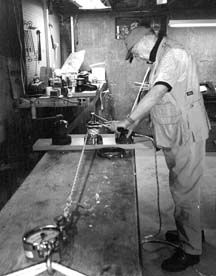
Anyone who has been on the bitter end of the sheet when a big genoa starts to fill—whipping and shaking with terrifying violence—knows how important it is to have a winch to convert that flailing energy to forward propulsion.
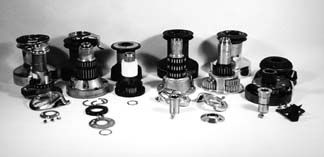
Winches are to sailboats what the inclined plane was to the Egyptians.
They make the difficult easy, place the impossible within reach.
The equivalent of a dozen or more men needed to heave on a square rigger’s halyard or brace is represented on a modern sailboat by a small, precision-made, cylindrical machine packed with levers and gears.
The refinement of gearing and the development of smooth-operating self-tailers has promoted modern winches from two-man to one-man workhorses with amazing power.
Their only negative is their proclivity to induce fidgety idlers to rotate them mindlessly, just to hear the pawls ratchet. These idlers usually can be broken of this annoying habit by shouting, “Winchclicker! Winchclicker!! Winchclicker!!!” If that fails, they generally are put ashore (if in harbor) or put to death (if on a long sea voyage).
Let’s take a close look at two common sizes of winches. They’re all expensive, because they are well-made precision equipment. They’re also among the most frequently retrofitted items; it’s worth repeating here that an oft-heard saying aboard a lot of sailboats is that the winches they came with are not big enough.
In the two categories selected, these winches are from six manufacturers—Andersen (Denmark), Antal (Italy), Barton (England), Harken (United States), Lewmar (England) and Setamar (Germany).
Small Winches The first category is very small winches. Those represented in this evaluation are among the smallest made by five of the manufacturers. One maker, Antal, makes excellent small winches in several sizes, but could not supply one for testing.
Small, single-speed winches, either with a handle or simply snubbing winches, are invaluable on small boats, for halyards, jib sheets, spinnaker sheets, reefing gear, vangs, etc., and handy, too, for many tasks aboard larger boats. Small winches do not come with the self-tailing mechanism; most manufacturers (Andersen is the exception) start the self-tailers with #16s, which also happens to be the minimum size for two-speed gearing.
Small winches are said to have a gear ratio of 1:1. That means they are direct drive. The only power advantage is that provided by a winch handle. It’s simple leverage, with two sets of pawls (one pair to restrain the drum; the other pair to permit the handle to ratchet freely). One turn of the crank is one turn on the drum. On a small boat, the single-digit power ratio provided by the handle often is ample for sheets. Non-geared winches take in line rapidly. Such winches often are used for halyards on somewhat larger boats. (The power ratio is the length of the handle divided by the radius of the drum.)
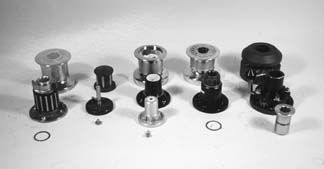
Snubbing winches, which do not accept a handle, turn in one direction only. They need only a single set of ratchet pawls. If enough wraps are applied, snubbing winches give the user time to get a new grip or to simply hold the line lightly while friction between the drum and the line takes the load.
They provide little mechanical advantage, but snubbing winches facilitate a good utilization of intermittent muscle power, They also have good line retrieval speed, which always is a consideration when dealing with winches.
Simple and trouble-free, they are of great value when the line load is no more than one’s weight or pulling strength. A halyard can be sweated up very taut by the “heave and hold” method of pulling hard on the line perpendicular to the mast with one hand while grabbing slack on the winch with the other hand.
With either small, direct-drive winches with handles or simple snubbers, the line retrieval rate is an undiluted derivative of the drum diameter, i.e. one revolution of the winch hauls in a length of line equal to the drum’s diameter multiplied by that popular symbolic 16th letter in the Greek alphabet. As a practical matter, line in equals line out.
Because they are simple devices, these small winches were not tested.
The Roaring 40s The second category is the very popular “Number Forties.” Winches are given numbers that correspond to their lowest and most powerful gear ratio. The power ratio of a geared winch is the length of the handle divided by the radius of the drum, multiplied by the gear ratio.
The big winches in this test are Andersens, Antals, Bartons, Harkens, Lewmars and Setamars. We tried to include the Australian-made Murray bottom-action winches, but could not find a U.S. distributor.
The versatile #40s—or their close equivalents—serve as genoa sheet winches on 30- to 35-foot boats, for spinnaker sheets and mainsheets on boats up to 48′, and for halyards, topping lifts, vangs, etc., on much larger sailboats.
The #40s in this collection are all two-speed. Three-speed winches usually are found on racing boats; they come in bigger sizes and get complicated and expensive.
All but one of these winches are self-tailing. In the beginning, several decades ago, self-tailing winches were troublesome…as is usual with most new things. Now perfected, the self-tailing mechanisms represent the only way to go on either racing or cruising boats.
Because winches are such beautifully made gear and rarely get worn out, marine consignment shops across the country are clogged with standard winches—mostly Barients—that once were highly coveted (as well as highly priced). We know of at least one instance in which dozens of perfectly usable standard winches were sold as scrap metal.
There even are a few early-model self-tailers (from various manufacturers) showing up now in the consignment shops; they’re okay for moderate duty but, generally speaking, are not good buys because the self-tailing mechanisms often are not as refined as those on current models. In plain English, that means they slip under heavier loads. Many also have abrasive drum surfaces that devour line.
The Test The Practical Sailor test, designed to establish efficiency ratings for winches, involves mounting each winch on the workbench.
To measure the force exerted, a 15″ torque wrench was used instead of a standard 10″ handle. (The extra length of the torque wrench required adjustments in the calculations.)
Sta-Set X, a modern, rather slippery line, was used, with some of the early tests repeated using Regatta braid, a fuzzy-finish line. The theory that because of varying friction a slippery line might produce different numbers than a fuzzy line proved specious.

At the other end of the bench, a tripled length of 1/2″ shock cord held by two eye straps provided the resistance. Shackled to the shock cord was a carefully calibrated Dillon dynamometer with a handy red max needle. The Sta-Set was attached to the other shackle on the dynamometer and thence to the winch. Four wraps were used. A minimum of three generally is recommended for all but extreme loads. The exception was the Setamar, which requires just one partial wrap of at least 220°.
Pulls of 10 and 20 pounds were for the trimmer easy work. Additional pulls of 30 pounds produced some sweat. A pull of 40 pounds probably would be regarded by an average person as a maximum effort; 50 pounds would be something only a bench-pressing girlfriend would do without making some kind of noise.
The numerous pulls produced figures whose averages indicate how close each winch came to meeting its power ratio.
An additional step in the testing was to determine how easy it is to free the line from the self-tailer and ease the line, as one would do in easing a sheet or halyard when coming off a beat onto a reach or run. In the case of the Setamar, this becomes complicated and is controlled by the handle.
The Results First of all, the fact that the smooth-skinned Sta-Set performed the same as fuzzy Regatta braid indicates that the gripping action of the self-tailing mechanisms on all of these winches probably is no longer at issue. There were difficulties when self-tailers were first introduced; that was before it was recognized that the diameter of the drum and the base diameter of the self-tailer were very critical dimensions.
Click here to view the Winches Value Guide .
There appeared to be no slippage. However, the sharpness of the teeth on the self-tailers’ disks may well affect wear on the line.
Dealing first with the small winches, there are lots of places on small boats where the ultra-simple Barton snubbing winch (about $50) would be useful. The almost equally simple Lewmar #6 ($92 in anodized aluminum) has an efficient mechanism; it also comes (for more money) in chromed or polished bronze. The #6 Harken ($108 for aluminum) turns on sleeved bearings and is the smoothest operating.
For small-boat sheets or bigger-boat halyards and vangs, the small single-speed Setamar ($364) makes eminently good sense. The ability to ease a sheet or halyard by turning the handle in the opposite direction, before freeing the line entirely, constitutes, in our opinion, a valuable safety factor. As was pointed out in an earlier, more detailed review (in the February 15, 1997 issue), the drum-less Setamar winches are very ingenious and may represent the design approach of the future. However, they currently are too expensive.
The Andersen #6 ($102), all-stainless, beautifully made, with Andersen’s ribbed drum and needle bearings, commands categorization as top-of-the-heap and Best Buy.
Summarizing now about the large winches, it’s tough to choose between Andersen and Lewmar. But first, let’s review the others.
The little Barton G23 is not comparable with the big 40s. It was included not only because it’s Barton’s biggest winch, but also because it may point to the future. An “Ugly Ducking”, if there ever was one (see photo), the Barton is made largely of reinforced plastic (including plastic needle bearing), but with a stainless steel axle, pawls and planetary drive gears made of sintered stainless, and a stainless sleeve on the plastic drum. The winch is a powerhouse and, along with being very light and corrosion free, requires almost no service. An occasional flushing with an optional light hit of WD40 is all it needs. It’s a $400 workhorse.
Although handsome winches and very finely made, both the Harken and Antal suffer from what appear to be unnecessarily complicated innards that produce some fall-off in efficiency. They suffer especially in their geared high speed modes and make the initial retrieval of line quite slow compared with the Setamar, Andersen and even the Lewmar.
In addition, the Practical Sailor tests revealed that the Harken drum surface caused abrasion on the Sta-Set line that was easily detected visually after only three or four “pulls.” The Harken and Antal have the most abrasive drums.
The Setamar? It’s so different, it’s difficult to compare with the more conventional #40s. It has a number of strong points. The principal ones are that it retrieves line fast (as fast as the Andersen) and easing of a loaded line can be controlled very safely with the handle (after shifting the top ring). Other benefits are that no wraps are needed; it is small and very lightweight, and line wear is the lowest of all.
The Setamar negatives: It is not a thing of beauty; is complicated to strip and clean (which it requires often); takes some “getting used to,” and it is far too costly.
Both the best and the Best Buy is the Andersen, but there’s almost no gap between it and the Lewmar.
The Lewmar, a first-rate value, is part of a line that was completely redesigned a few years ago to simplify the gearing, reduce the number of parts and make the winch both stronger and easier to service.
The Lewmar ranks first in efficiency, a hair ahead of the Andersen, and is easy to disassemble. If it had a drum as good as the Andersen, it would be a toss-up.
The Andersen has a direct drive high gear that retrieves line fast, a good low gear mechanism that may come second to the bearing-packed Harken, but its real forte is the polished stainless steel drum. The drum, a masterpiece of metal-working, is ribbed, which produces very little abrasion because it moves the coiled line up the drum much better than an abrasive drum. The drum should last virtually forever.
A peculiarity of the Andersen is that when the line is heavily loaded, easing the line can be a bit jerky as the line skips from rib to rib. Although initially disconcerting, it is not even a minor problem.
There’s nothing second-rate about any of these winches. They all work very, very well and last a long time if properly cared for. The choice may involve gear ratios, serviceability or even cosmetics (we still believe a good part of a sailboat’s appeal is aesthetic).
If it’s something different you want, try Setamar. If you don’t need a large winch, don’t overlook the “new-tech” Bartons. But for efficiency, serviceability, construction and appearance, our top choice is the Andersen.
Contacts- Andersen, Scandvik, Inc., 423 4th Pl. SW, Vero Beach, FL 32961-0068; 561/567-2877. Antal, Euro Marine Trading, Inc., 62 Halsey, Newport, RI 02840; 800/222-7712. Barton, Imtra Corp., 30 Samuel Barnet Blvd., New Bedford, MA 02745; 5008/005-7000, www.imtra.com. Harken, 1252 E. Wisconsin, Pewaukee, WI 53072; 262/691-3320; www.harken.com. Lewmar, New Whitfield St., Guilford, CT 06437; 203/458-6200; www.lewmar.com. Setamar, Setamar USA, Box 840, 17 Burnside St., Bristol, RI 02809; 401/253-2244.
RELATED ARTICLES MORE FROM AUTHOR
Leave a reply cancel reply.
Log in to leave a comment
Latest Videos

Beneteau 46.1: What You Should Know | Boat Tour

How to Clean Your Sails

C&C 40: What You Should Know | Boat Review

A Simple Solution for Boat Toilet Stink
- Privacy Policy
- Do Not Sell My Personal Information
- Online Account Activation
- Privacy Manager
- Mastering your sailing experience: All about self-tailing winches
When it comes to sailing, having the right equipment can make all the difference in the world. Among the crucial components of a sailboat, the self-tailing winch stands out as a true workhorse. In this comprehensive guide, we'll delve into the world of self-tailing winches, exploring their meaning, function, and how they can enhance your sailing experience.
Understanding the basics
Let's start with the basics. A self-tailing winch is a mechanical device used on sailboats to handle the lines or ropes (commonly referred to as sheets) that control the sails. Its unique design allows for easier and more efficient sail adjustment.
Here's a simplified explanation of how a winch operates:
- The drum : At the core of a winch is a drum, often cylindrical in shape. This drum is connected to a shaft, which can rotate when powered.
- Cable or rope : A strong and durable cable or rope is wound around the drum. This cable is what you'll attach to the load you want to lift or pull.
- Power source : Winches can be powered by various sources, depending on their application. Common power sources include electric motors, hydraulic systems, or manual cranks.
- Engaging the winch : To start the winching process, you engage the winch by either turning on the motor, activating the hydraulic system, or manually rotating the drum using a handle.
- Winding the cable : As the drum rotates, it winds the cable or rope around itself. This winding action creates tension on the cable.
- Lifting or pulling : The tension on the cable allows the winch to either lift a load vertically or pull it horizontally, depending on how it's anchored.
- Direction control : Most winches have a direction control mechanism that lets you choose whether the cable is wound in or out. This control allows for precise load movement.
- Safety measures : Winches often come with safety features, such as brakes or clutches, to prevent the cable from unwinding unintentionally.
- Load limit : It's crucial to be aware of the winch's load limit, as exceeding it can damage the winch or lead to accidents. Always follow manufacturer guidelines.
- Releasing the cable : To release the cable or rope, you disengage the winch and allow it to unwind the cable from the drum.
Winches are versatile tools used in various industries and recreational activities, from off-roading and sailing to construction and rescue operations. Understanding how they work ensures safe and efficient use in different scenarios.
Read our top notch articles on topics such as sailing, sailing tips and destinations in our Magazine .
Winch on a sail boat close up and sailor pulling the rope.
Check out our latest sailing content:
Fishing and sailing: where to sail for the best catches, skippered boats: how to pack for a cruise, boat rental with skipper: everyone can go to sea, skippered boats: myths about sailing, sail from lefkada for 14 days. where to, what not to miss when visiting lefkada, skippered boats: step by step boat rental, where and why to sail from lefkas marina, don’t panic: handling maritime emergencies, skippered boats: which boat to choose, the best sailing routes from biograd na moru, yachting away from ourselves: a voyage to inner peace, sail to the 7 most beautiful sights in greece, skippered boats: how to build a crew, skippered boats: the most popular cruise destinations, what skipper's licence do i need, skippered boats: what else to experience on a cruise, from lefkada or corfu to paxos and antipaxos, discover the paradise of paxos and antipaxoss, skippered boats: a typical day on a boat, skippered boats: what it looks like on a boat, discover corfu: sailing adventure in the ionian, sextant and navigation: survival without gps, 5 best sailing routes in the bahamas, skippered boats: how much does a boat holiday cost, yachting guide to the bahamas, the ultimate yacht cleaning kit, introduction to chartering with a skipper, traditional sailor tattoos: meaning of the swallow, the most popular catamarans of 2023, sailboat winches , 1. manual winches.
- Manual winches are operated by hand. They have a handle that sailors turn to wind in or release the line. They are commonly found on smaller sailboats and are cost-effective.
2. Electric winches
- Electric winches are powered by an electric motor, making sail adjustments even more effortless. They are often used on larger sailboats and luxury yachts, where the loads can be significant.
Functions of sailboat winches
1. hoisting sails.
- Sailboat winches are primarily used to hoist sails. They make it possible for sailors to raise heavy sails, such as the mainsail or jib, quickly and with minimal effort.
2. Trimming sails
- Once the sails are hoisted, winches are used to trim them properly. Sailors can adjust the tension on the sails' sheets (lines) to achieve the desired sail shape and performance.
3. Adjusting lines
- Sailboats have numerous lines and halyards (ropes) that control various aspects of sail trim and boat handling. Winches assist in adjusting these lines effectively.
4. Securing anchors and docking
- Some sailboats use winches to handle anchor lines and docking lines. This helps in securely anchoring the boat and safely maneuvering it in and out of harbors.
5. Cranking
- Sailboat winches can also be used for cranking purposes, such as raising a dinghy or lifting heavy objects on board.
So what are you waiting for? Take a look at our range of charter boats and head to some of our favourite sailing destinations.
I am ready to help you with booking a boat for your dream vacation. Contact me.

Denisa Nguyenová
Sailing Winch: The Ultimate Guide for Smooth Sailing
by Emma Sullivan | Jul 23, 2023 | Sailboat Gear and Equipment

Short answer: Sailing winch
A sailing winch is a mechanical device used in sailboats to control and trim the sails. It consists of a drum that rotates with the help of gears, enabling sailors to adjust the tension and position of the sail by winding or unwinding the line. These winches greatly enhance efficiency and ease of handling sails, especially in larger vessels.
Introduction to Sailing Winch: Everything You Need to Know
If you’re a novice sailor or even an experienced one, the sailing winch is an essential piece of equipment that you cannot afford to overlook. Despite being a rather simple mechanical device, the winch plays a crucial role in controlling and trimming sails, making it an indispensable tool for any sailing enthusiast. In this article, we delve into the world of sailing winches, explaining their significance, mechanism, and how they contribute to navigating the high seas.
So, what exactly is a sailing winch? Well, picture this – imagine you’re out at sea with your trusty sailboat and need to adjust your sails for optimum performance. Without a winch, this process would be demanding and physically straining. The sailing winch comes to the rescue by providing sailors with mechanical advantage via its ingenious design.
Designed with durability and efficiency in mind, modern-day sailing winches consist of numerous components working seamlessly together. From the drum (also known as the barrel) where the line or rope wraps around during operation to the base or pedestal that secures it in place – each part plays its distinct role while complementing others for smooth functioning.
The beauty of a sailing winch lies in its mechanism – predominantly driven by gears arranged within its core. When sailors exert force on the handle attached to this cylindrical powerhouse of functionality (also called an arm), several gear interactions come into play. These gears facilitate load distribution across various sections of the winch while generating significant power transmission.
An experienced sailor knows that different conditions demand varying sail configurations for optimal speed and maneuverability. Fortunately, sailing winches cater to these requirements by offering two primary types – self-tailing and non-self-tailing variants.
The self-tailing winch gains popularity due to its user-friendly nature. With built-in jaws encircling the drum’s perimeter, it securely holds lines once engaged correctly. This innovation eliminates the need for additional crew members to tend to the lines, making sailing a more manageable and enjoyable experience for solo or small crew expeditions.
On the other hand, non-self-tailing winches require careful manual guidance of lines during tensioning or releasing. Although they may pose technical challenges in extreme weather conditions, these winches hold their own by offering superior control over line handling when operated skillfully.
Regardless of the type you choose, selecting an appropriately sized winch for your vessel is crucial. Remember to consider factors such as sail area, boat displacement, wind strength, and personal preferences when deciding on the appropriate power ratio for your sailing winch.
Now that we’ve discussed the significance and mechanics of sailing winches let’s not forget about proper maintenance. Your trusty winch requires periodic care and attention to ensure its longevity. Regular lubrication with high-quality grease and rinsing off saltwater residue can go a long way in preserving its smooth operation. Additionally, inspecting gears, pawls, springs, and bearings will help identify potential areas needing repair before they turn into bigger problems down the line.
In conclusion, understanding the fundamentals of a sailing winch equips sailors with valuable knowledge that can greatly enhance their overall sailing experience. Whether it’s adjusting sails to catch that perfect wind or effortlessly controlling line tension during maneuvers – a well-functioning winch is a sailor’s best friend. So next time you embark on an adventurous voyage across the open waters, remember just how vital this humble yet ingenious device is in navigating rough seas with grace and precision.
How a Sailing Winch Works: A Step-by-Step Guide
Sailing is often associated with adventure and the feeling of being one with nature. It’s not just about hoisting your sails and letting the wind carry you away; it requires skill, strategy, and knowledge of the intricacies involved in maneuvering a vessel. One essential component that plays a critical role in controlling sailing boats is the winch.
In this step-by-step guide, we will delve into the fascinating world of sailing winches, unraveling the mechanisms behind their operation. Prepare to embark on a journey where ropes meet gears and physics collaborates with mechanics.
Step 1: Understanding the Basics
A sailing winch is a mechanical device used to control tension on sails by winding or unwinding rope known as sheets. Sheets are usually made of strong polypropylene or polyester materials specifically designed to withstand extreme conditions out at sea. The basics involve converting human effort into mechanical advantage through coiling and uncoiling these sheets around a drum.
Step 2: Anatomy of a Winch
To comprehend how a winch works, let’s start by exploring its physical structure. Think of it as an elegant fusion between simplicity and complexity. A typical winch consists of three main components – the drum, gears, and handle. The drum serves as the core element responsible for winding or storing ropes effectively. Gears provide mechanisms for multiplying force, enabling sailors to handle heavy loads with ease while minimizing fatigue during strenuous maneuvers. Lastly, there’s the ergonomic handle ensuring smooth operation without compromising comfort even when faced with powerful gusts.
Step 3: Load Distribution & Gear Ratios
As mentioned earlier, sailors rely on winches to manage substantial loads effortlessly – all thanks to something called gear ratios! In simple terms, gear ratios determine how much power an individual exerts on ropes via handle rotation compared to what is applied at the drum upon sheet release. By adjusting the gears, sailors can distribute loads evenly or multiply power when faced with challenging conditions, enabling them to conquer even the fiercest winds and tides.
Step 4: Art of Winching
Now comes the fun part – winching! To set sail or make adjustments mid-journey, sailors skillfully wrap a sheet around the drum and start rotating the handle clockwise. This motion causes the winch’s gears to engage, multiplying their efforts and effectively tightening or easing tension on the sail. Control is of utmost importance here; precise rotations ensure sails respond accurately to every tactical move made by sailors onboard.
Step 5: Safety Measures & Maintenance
While sailing winches provide immense control and maneuvering capabilities, safety should not be overlooked. Sailors must be mindful of potential entanglements when operating a winch, always keeping hands clear from moving parts. Routine maintenance is crucial for optimal performance. Regularly lubricating gears and ensuring all components are in good working order will make sure your winch becomes a reliable companion on your sailing adventures.
In conclusion, understanding how a sailing winch works unveils the secret world behind smoothly navigating through waterways. It involves harnessing natural forces while orchestrating an intricate dance between human prowess and mechanical precision. So next time you set foot (or hand) on a sailing vessel, marvel at its ingenious design and appreciate the wonders it accomplishes in making seafaring dreams come true.
Choosing the Right Sailing Winch for Your Boat: FAQs Answered
When it comes to sailing, having the right equipment can make all the difference in your experience out on the water. One crucial piece of equipment that every sailor should have is a reliable sailing winch. But with so many options available in the market, how do you choose the right one for your boat? In this blog post, we will answer some of the most frequently asked questions about choosing the perfect sailing winch.
1. What is a sailing winch?
A sailing winch is a mechanical device used to control and adjust sails on a sailboat. It consists of a drum or cylinder around which a line (rope) is wound. By turning the winch handle, you can manually adjust the tension and position of the sail, allowing for better control and maneuverability.
2. How do I determine the size of winch I need?
The size of your sailing winch depends on several factors such as boat size, sail area, and type of sailing you plan to do. As a general rule of thumb, larger boats with bigger sails require larger winches. It’s best to consult with a professional or refer to your boat’s manufacturer guidelines to ensure you select an appropriately sized winch.
3. What are self-tailing winches?
Self-tailing winches feature an additional mechanism that automatically grips and holds onto lines as they are being wound onto the drum. This eliminates the need for an extra person to hold tension on the line while you crank the handle. Self-tailers are particularly useful when single-handing or when quick adjustments are required during maneuvers.
4. Are two-speed or single-speed winches better?
This depends on your specific needs and preferences. Two-speed winches offer both high and low gear ratios, allowing for easier cranking under different circumstances. They are recommended for larger boats where significant loads may require more torque. On the other hand, single-speed winches are simpler and lighter, making them a popular choice for smaller boats or sailors who value simplicity.
5. What materials should I consider when choosing a winch?
Winches are typically made from stainless steel, chrome-plated bronze, or aluminum. Stainless steel is the most durable option and suitable for both saltwater and freshwater environments. Chrome-plated bronze combines elegance with corrosion resistance, while aluminum is lighter but not as strong as the other options.
6. Can I mix different brands of winches on my boat?
While it’s best to stick to a single brand for consistency in design and servicing, it’s generally possible to mix different brands of winches on your boat if needed. However, always ensure compatibility in terms of size, mounting hole patterns, and line diameter to avoid any issues.
Remember that investing in a high-quality sailing winch is crucial for safe and efficient sailing. It’s essential to choose one that suits your boat’s specific needs while considering factors such as size, type of sailing, materials used, and additional features like self-tailing or multiple speeds. Consulting with professionals or seeking advice from experienced sailors can help you make an informed decision. So go ahead, equip your boat with the perfect winch and have an exhilarating experience on the water!
Top Tips for Maintaining and Caring for Your Sailing Winch
Title: Top Tips for Maintaining and Caring for Your Sailing Winch
Introduction: A sailing winch is an invaluable tool on any boat, as it helps sailors effortlessly handle the various tasks on board. Whether you’re trimming sails or hoisting anchors, a well-maintained winch ensures smooth and efficient operations. To ensure your sailing winch remains in pristine condition, we have rounded up some top tips to help you care for and maintain this essential piece of equipment.
1. Regular Cleaning: It may seem obvious, but keeping your sailing winch clean is crucial for its longevity and optimal performance. After each sail or whenever there’s visible dirt accumulation, remove the handles and use a brush to eliminate dust, salt residue, or any other particles that may impair its functionality. Don’t forget to lubricate the moving parts afterward using a suitable marine lubricant.
2. Inspection and Lubrication: Regular inspections are essential to detect signs of wear or damage early on. Check the gears, pawls, springs, and bearings for any signs of rust, cracking, or misalignment. Apply a high-quality lubricant specifically designed for marine purposes to ensure smooth operation and prevent corrosion.
3. Correct Line Handling Techniques: Correctly handling lines when operating your winches can significantly extend their lifespan while preventing accidents. Avoid sudden jerks or excessive force when raising or lowering sails as this can put unnecessary strain on the winch components. Foster good habits by training all crew members on proper line handling techniques.
4. Store Cover/Shelter: Protecting your sailing winch from harsh weather elements like rain, UV rays, saltwater spray, and excessive sunlight is fundamental for maintenance. When not in use – especially during long periods of non-use – consider utilizing protective covers made from durable materials suited for marine environments or store them below deck if possible.
5. Regular Servicing: Just like any mechanical device with moving parts, a sailing winch also requires regular servicing to keep it in top shape. Engage with a professional sailboat maintenance service or tackle the task yourself if you are experienced. Servicing entails thorough inspection, cleaning, lubrication, greasing, and replacement of worn parts as required.
6. Spare Parts on Hand: Being prepared is key to handling unforeseen breakdowns. Make sure to keep spare parts onboard such as springs, pawls, and lubricant seals that are specific to your winch model. Additionally, consider having a spare complete drum assembly or even an entire winch for ease of replacement should the need arise.
Conclusion: Maintaining and caring for your sailing winch is not only vital for its longevity but also ensures your safety and enhances performance while out on the water. Implementing these top tips – regular cleaning, inspections, proper line handling techniques, protection from the elements, regular servicing, and keeping spare parts on hand – will help you enjoy smooth sailing adventures for years to come while safeguarding your investment. Remember that a well-maintained winch translates into hassle-free operations and peace of mind amidst wind-filled sails!
Essential Techniques for Handling a Sailing Winch Effectively
Title: Mastering the Art of Sailing Winch Handling: Indispensable Techniques for Smooth Navigation
Introduction: When it comes to operating a sailing boat, few skills are as vital as effectively handling a winch. This powerful mechanical device is crucial in adjusting sail tension, controlling speed, and maintaining stability. However, many novice sailors find themselves overwhelmed by its complexity. Fear not! In this blog post, we will guide you through the essential techniques for handling a sailing winch with finesse and confidence. So grab your sailing gloves and let’s dive in!
1. Get a Grip with Correct Hand Placement: As the old saying goes, “A firm grip leads to smooth sailing.” Begin by securing your dominant hand on the winch handle’s rubber grip. Optimal hand placement is around the center or at an angle of 45 degrees downwards when positioned vertically. This positioning maximizes leverage while providing better control during operation.
2. Understand Mechanical Advantage: Winches are designed with gears (also known as self-tailing mechanisms) that multiply the force applied to them. To utilize this mechanical advantage effectively, you need to grasp how different gear configurations affect their performance.
– Single Speed Winches: The simplest type typically found on smaller boats with one gear ratio only. They require more manual effort but offer greater precision due to direct control over sail trim adjustments. – Multiple Speed Winches: These advanced models come equipped with multiple gears that offer varying power-to-speed ratios depending on your needs. Engaging lower gears generates more torque for heavy loads, while higher gears allow swift trimming under lighter winds.
3. Hauling Line Simultaneously: When participating in high-intensity maneuvers such as tacking or gybing, efficiently hauling line becomes paramount—multitasking at its finest! To tackle this challenge smoothly:
– Coordinate Symmetrical Movement: Train yourself to match your winch handle rotations precisely with the movement required from the line. This synchronization will prevent any potential snags or jams and optimize efficiency. – Engage Crew Communication: Establish clear communication between you and your fellow sailors. Develop a system of hand signals or verbal cues to ensure everyone is on the same page during intense maneuvering.
4. Self-Tailing Excellence: Ah, the self-tailing mechanism—the jewel in the winch’s crown! Mastering this feature allows for effortless winching without compromising safety:
– Pre-threading the Line: Before engaging the self-tailing mechanism, ensure that the line is correctly threaded through its jaws/clamps. Proper threading prevents slippage or jamming during operation. – Applying Controlled Tension: While cranking the winch handle, gently apply tension to keep the line securely positioned within the self-tailer’s jaws. Avoid overtightening, as it may impair smooth trimming or even damage parts.
5. Maintenance and Care: To stay captain of your vessel, regular maintenance and care are crucial for optimal winch performance:
– Cleanliness is Key: Regularly rinse winches with freshwater after use to remove saltwater deposits that can corrode internal components. Periodically lubricate gears and pawls with marine-grade lubricant for seamless operation. – Inspect and Replace Parts: Routinely examine winch components like springs, pawls, and gears for any signs of wear or damage. Replace these as needed to ensure reliability when on deck.
Conclusion: Managing a sailing winch effectively can initially seem like an intricate dance requiring coordination, strength, and attention to detail; however, with practice and these essential techniques at your disposal, conquering this task becomes second nature! By mastering proper hand placement, understanding mechanical advantage options, honing multitasking skills, harnessing self-tailing capabilities to your advantage, and maintaining regular upkeep—you will elevate your sailing experience to new horizons of control and finesse. So gear up (pun intended), keep learning, and embrace the exciting challenges that come with sailing winch mastery!
Troubleshooting Common Issues with Sailing Winches: FAQs Answered
As all seasoned sailors know, sailing winches are essential pieces of equipment that make maneuvering the boat much easier. These mechanical devices allow you to control and adjust sails effortlessly, contributing to smooth sailing experiences. However, like any mechanical system, winches can face common issues that may hinder their proper functioning.
Fear not! In this comprehensive guide, we’re here to address some frequently asked questions regarding troubleshooting these common problems with your sailing winches. So let’s dive in!
1. Why is my winch not turning smoothly?
One of the most common issues sailors encounter with their winches is a lack of smooth turning. This can be caused by various factors such as rust, dirt buildup, or inadequate lubrication. To rectify this problem, start by thoroughly cleaning the winch gears and pawls using a mild detergent and warm water solution. Make sure to remove any accumulated grime or salt deposits that might impede the smooth rotation of the winch handle.
Once cleaned, apply a suitable marine-grade lubricant specifically designed for winches to ensure optimal performance. Remember to clean and grease your winches regularly to prevent future disruptions during your sailing adventures.
2. My winch drum is slipping under load – what should I do?
Winch drums slipping when under load can be incredibly frustrating, especially in critical situations where quick sail adjustments are necessary. The leading cause of slipping is typically worn-out pawls or springs inside the drum assembly.
Firstly, inspect these components carefully for any signs of wear or damage and replace them if necessary. Additionally, check if the tension on your halyard or sheet line is set correctly; excessive tension can overload the drum and lead to slippage.
To avoid future slip-ups (pun intended), consider upgrading your winch’s pawl material from aluminum to stainless steel for improved durability under heavy loads.
3. How do I fix loose handles on my sailing winches?
Loose winch handles can be bothersome, not just because they’re noisy but also due to the potential safety risks they pose. Fortunately, resolving this issue is relatively simple. Start by checking if there’s a retaining pin present on your winch handle. If it’s missing or worn out, replace it with a new one.
Alternatively, you can carefully tighten the handle using an adjustable wrench. Remember not to overtighten; this might lead to difficulties when quickly releasing the handle during an emergency. Striking a balance between security and easy removal is key.
4. Help! My winch is making strange noises – what could be causing this?
Unusual noises emanating from your sailing winches are undoubtedly cause for concern. The first step in addressing these strange sounds is identifying their source. This could include grinding, squeaking, or clicking noises.
Grinding sounds generally indicate that something might be interfering with the gears’ smooth operation. Check for any debris lodged within the gears and remove it promptly.
Squeaking or clicking sounds may suggest that some parts of your winch require lubrication or greasing. Perform regular maintenance by applying an appropriate lubricant to all moving parts, chiefly focusing on pawls, gears, and bearings involved in the drum’s rotation.
5. What should I do if my sailing winch won’t release properly?
A stubbornly locked winch is indeed frustrating when you need immediate sail adjustments or releases in response to changing weather conditions.
Firstly, inspect if there’s any tangled or twisted line causing complications within the self-tailing jaws or around other areas of the drum assembly.
If this doesn’t resolve the issue, ensure that no foreign objects like fishing line or seaweed have become entangled within the drum mechanism – these intrusions can impede smooth operation significantly.
Finally, verify that your release lever operates smoothly and isn’t damaged or obstructed. Lubricating these mechanisms regularly can help prevent future difficulties.
Remember, when in doubt or faced with persistent winch problems, always consult your sailing equipment manufacturer or a professional technician to ensure proper troubleshooting and repair techniques.
Recent Posts

- Sailboat Gear and Equipment
- Sailboat Lifestyle
- Sailboat Maintenance
- Sailboat Racing
- Sailboat Tips and Tricks
- Sailboat Types
- Sailing Adventures
- Sailing Destinations
- Sailing Safety
- Sailing Techniques
- AROUND THE SAILING WORLD
- BOAT OF THE YEAR
- Email Newsletters
- America’s Cup
- St. Petersburg
- Caribbean Championship
- Boating Safety

Sailboat Winch Technique 101
- By Sean Clarkson
- Updated: May 2, 2014
Loading a sailboat winch in the correct direction is the first step. Many big-name sailors have fallen victim to this. If there’s any doubt, especially if your boat has counter-rotating winches, put arrows on the top of the winch or on the deck around the base of the winch. It may not look cool, but neither is putting turns on incorrectly.
It’s important that the sheet is led to the winch at the correct height. If it’s too low, it can slip down the drum, and if it’s too high, it can lead to regular overrides. The sailing winch manufacturer can provide a drawing with the ideal angle for the lead.
The number of wraps you start with is really a function of rope diameter, drum diameter, and drum surface quality. Smaller-diameter line may require more wraps to prevent the line from slipping on the drum. In general, though, two wraps is a good starting point, and as load increases, you can add more.
Don’t be surprised if, for example, the jib winch requires two wraps on one side and three on the other. The way sailboat winches load, you gain or lose half of a wrap because of where the line starts and finishes on the winch. And with sheets moving at high speed, make sure there’s no slack in the lazy sheet before you start pulling because you can easily end up with an override.
If you do happen to get an override, don’t keep it a secret from the rest of the crew—it’s better that they know, especially if you’re around other boats and need to dip or tack. If you have time, the best method to remove the override is to reverse the lead direction of the sheet (or halyard) and pull the override out, either by hand or by using another winch. Be careful when the override clears itself and gets reloaded. If the override is on the jibsheet and time is short, the best option is to cut the sheet at the clew when tacking. After the tack, reattach the sheet. If you cut the sheet at the winch, it will likely end up being too short. Trust me, I’ve seen it happen.
Winch gearing is all based on required line speed, which means being in the right gear to trim the sail in smoothly at the same rate the apparent-wind angle changes. Driving a sail in and stalling it isn’t fast. On a three-speed winch, first gear is your gross tune for pulling in the majority of the line: one rotation of the handle generally equals one drum turn. In second gear, you’re finishing your trim with the line carrying a lot more load: more winch-handle rotations are required for one drum rotation. Third is your high-load, fine-tune gear.
If your winch has a first-gear button, you’re in luck for jibing asymmetric sails or big genoas. Keeping your momentum going is key. Anticipate when you need to change gears before the load gets too high.
There are a few things you can do to make it easier when using a handle-driven winch with a first-gear button. For example, never put the winch handle directly over the button. This prevents the button from popping up to give you third gear. Also, if you leave the winch handle in the winch, try to leave it pointing to leeward—this helps prevent the handle from swinging down by itself (if you hit a wave, for example) and disengaging first gear.
Speaking of winch handles, a longer handle is a great “extra” gear. Most manufacturers produce both 8-inch and 10-inch handles. If you need more speed, use the short handle. If you need just grunt, say for the backstay, the 10-inch handle gives you 20 percent more power.
There are a few options for the actual handle-grip style and locking mechanism, but in short, the double handle is good for big loads when speed is not as important. The single handle is easy and quick, which is better for smaller boats and lower loads. The speed-grip handle is, in my opinion, the best all-around because it covers both options.
In terms of locking mechanisms, I prefer the newer handles with quick one-handed grip levers that are fast and easy to engage and disengage. If the handle is wobbly or hard to disengage from the winch, it’s probably time to buy a new handle.
A lot of winch technique comes down to experimentation and communication between the trimmer and the grinder. The grinder must be observant of the sail’s needs and anticipate what is required. For example, catching the curl on a spinnaker early requires less grinding and less steering by the helmsman, which equates to speed. If you’re grinding, always watch the telltale signs: the sail itself, the breeze, the helm, and the opposition.
Every boat’s layout is different, so the most efficient stance varies. However, the goal is to get your body over the winch and have a secure position for your legs. A huge amount of your power comes from your core and legs, so you need to be well braced. Where you are depends on many variables, but in light air try to be forward and to leeward. In heavy air, maximize your weight to windward. Either way, stay in a mobile position when you’re not grinding; your body weight is critical to the kinetics of the boat, such as rocking the boat down out of a jibe and roll tacking.
This article first appeared in the March/April 2014 issue of Sailing World. To read more sailing tips, click here.
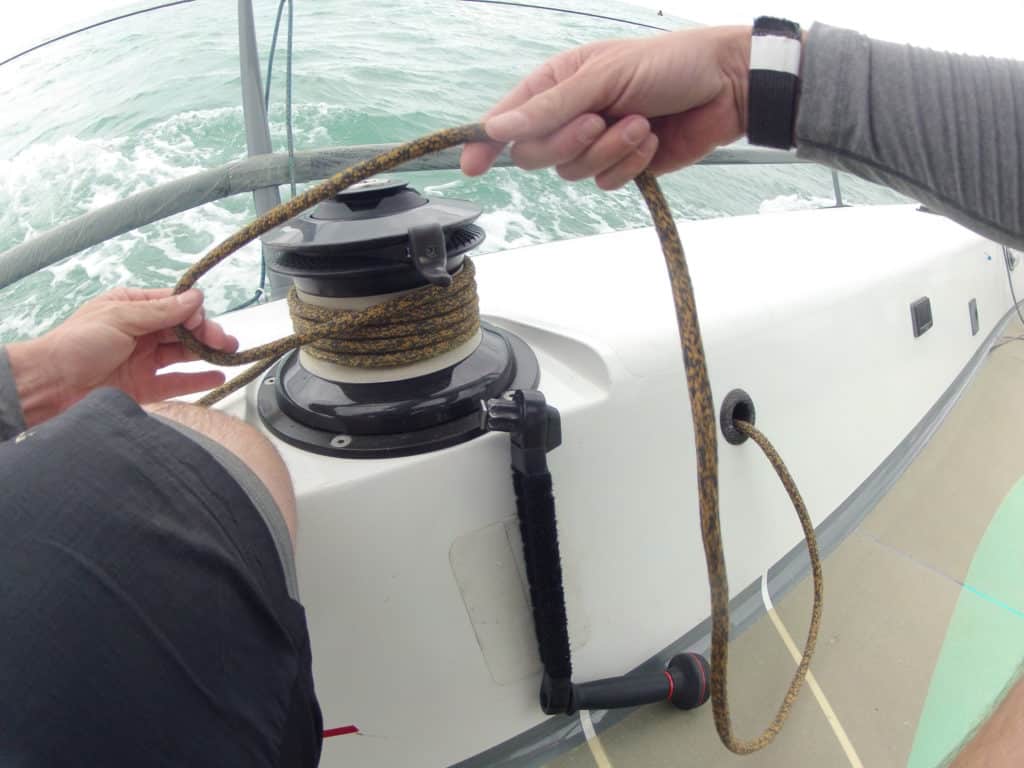
Winch Wraps
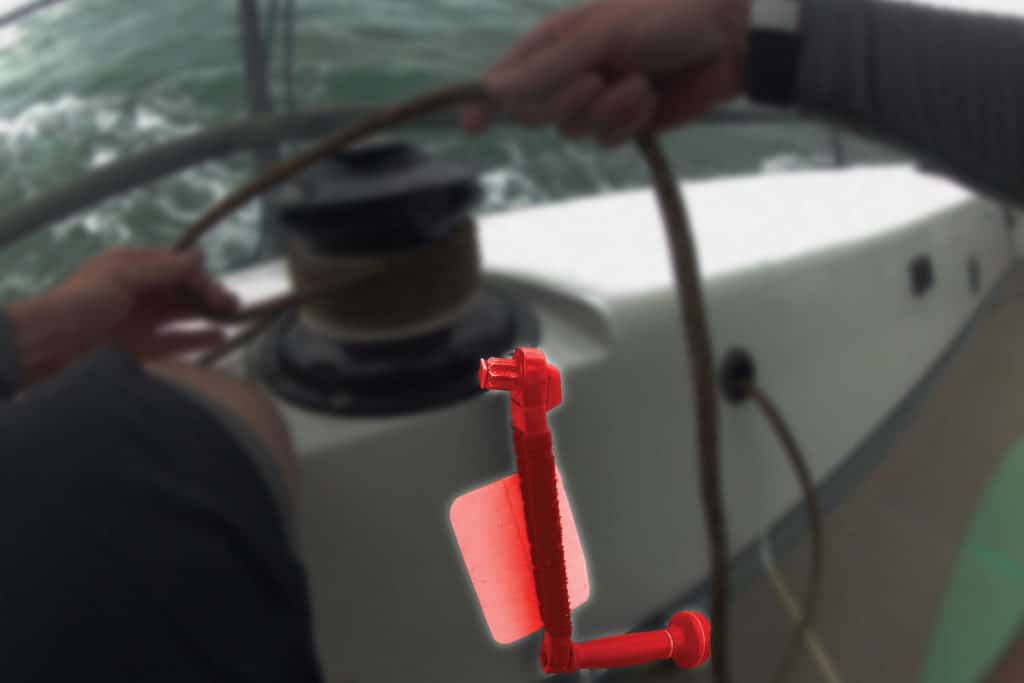
Sean Clarkson
- More: Sailing How To
- More How To

Racecourse Strategy: The Middle Versus the Edge
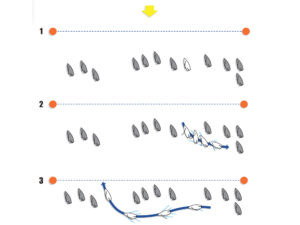
Four High-Level Starting Moves
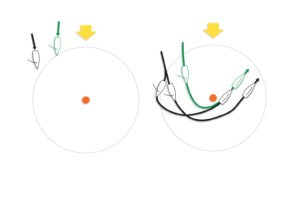
A Guide to Tactical Risk Management

The Wisdom of Augie Diaz
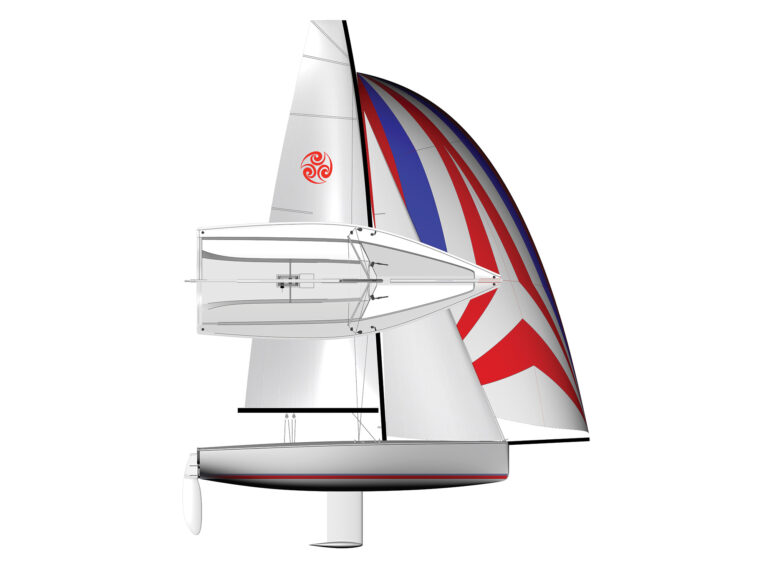
The Storm 18 is Brewing

The Rebirth of SailGP’s US Squad

Local Knowledge For Detroit
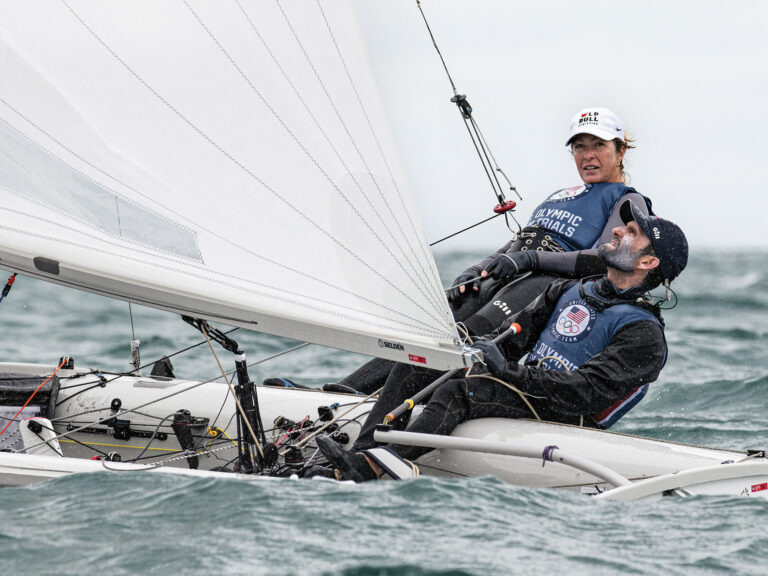
From Trials to Games

- Digital Edition
- Customer Service
- Privacy Policy
- Cruising World
- Sailing World
- Salt Water Sportsman
- Sport Fishing
- Wakeboarding

What is a Sailboat Winch?

Last Updated by
Daniel Wade
June 15, 2022
A sailboat winch is a mechanical winding device that allows you to tighten and loosen lines. Winches ratchet in either direction.
Sailboat winches are present on nearly every sailing vessel above twenty feet in length. Winches allow you to wind your sheets and halyards using a crank instead of pulling them in by hand. Like blocks, winches are mechanical devices designed to manipulate forces.
Table of contents
Sailboat Winch Design
Sailboat winches are relatively simple devices. Winches aboard sailboats are, in essence, miniaturized versions of large winches aboard full-sized ships. They consist of a rotating drum atop a plate, which contains a cam and a gear system.
Sailboat winches also have a slot on top for a crank, which is removable and often switched between winches on either side of the cockpit. Winches have a "cleat" above the drum, which holds the line in place, and a "self-tailor" that feeds the cable into the cleat. Older winches don't always have a cleat or a self-tailor.
What does a Sailboat Winch Do?
Sailboat winches wind up lines like a spool of thread. But unlike a loose spool, sailboat winches have an internal mechanism that only allows them to turn in one direction. This means you can wind up the line, let go of the crank, and it won't all come unraveled.
What are Sailboat Winches Used For?
Sailboat winches are used in a variety of ways. Most sailboat winches are used to manipulate the rigging. These tasks include hoisting the sails with the halyards and trimming the sheets.
Sailboats usually have at least two winches, but many have four or more. These are commonly located atop the aft section of the cabin and along the rails of the cockpit.
Some winches are located on the stern, and others at the bow for lifting the anchor or pulling up to the dock. Some winches serve more than one purpose. For example, you can raise the mainsail , secure the mainsheet to a cleat, unwind the line, and use the winch for something else.
Ratcheting Winches
Sailboat winches contain a ratcheting cam system. Ever hear a winch make a clicking sound during winding? That's the cam at work. The cam is a spring loaded rocker that runs along with a gear in the winch. It works like a bicycle sprocket.
When you set the direction of a winch, the cam shifts into a position that blocks the gear teeth from turning towards it. However, when wound in the set direction, the teeth of the gear lift up the cam, which drops to the next tooth producing that signature clicking sound.
Winch Gears and Speeds
Winches often have multiple gears, which change the speed of the turn. Winches typically use a fast and a slow speed, which is activated by turning the crank in a particular direction.
Use the fast speed when taking up the slack, as it's faster but harder to turn. When tension begins to build, switch cranking directions, and it'll switch to the slow speed. The slower speed produces more torque.
How to Use a Sailboat Winch
Operating a sailboat winch is usually quite easy and can be accomplished quickly in almost any condition. Winding (loading) and unwinding the winch are different processes, which we'll cover here.
How to Load a Sailboat Winch
Start by winding the rope around the winch by hand in a clockwise direction from bottom to top. After the first loop, pull out as much slack as you can by hand. Three or four loops are usually sufficient.
Next, take the top end of the line and place it in the jaw of the self-tailor, then secure it in the cleat. Now you can begin winding the winch, usually with the fast gear first. Once tension begins to rise, switch to the slow speed until you're satisfied with the result.
How to Unwind a Sailboat Winch
Unwinding the winch is simple but requires some strength and control. Start by getting a good grip on the loose end of the line. Next, carefully remove it from the cleat. Gently ease out on the rope by releasing tension. Once you've reached the desired length, simply slide the end of the line back into the cleat.
Sailboat Winch Safety
Sailboat winches store a lot of force, so it's essential to treat them and the areas directly around them with respect. It's generally best to keep your hands and body at least a foot away from the winch when it is moving.
Also, keep your clothes, hair, and life jacket straps away from the moving pieces, as anything loose can get caught and compressed between the lines. Winches can break bones, so be aware and use caution.
Winches Without Cleats and Self-Tailors
Many older winches and simpler winch designs don't use self-tailor systems. Self-tailors are a convenient and effective design feature, but having one isn't entirely necessary to operate a sailboat winch.
Winches without integral cleats or self-tailors always have another kind of cleat nearby. In many cases, a cam cleat is located on a deck or bulkhead directly across from the winch. Load and wind the winch as you normally would, then draw the end of the line into the cam cleat and pull it tight.
Winch Winding Tips
Winding a winch can be tricky at first, which is why we're going to cover a few sailboat winch tips to help you get started. With these tips, you can reduce the amount of time you spend untangling lines and (hopefully) prevent the occasional rope burn or palm blister.
For one, always wind the winch in a clockwise direction starting from the bottom. This is standard procedure, even if the cleat is lower than the base of the winch. Winding the winch from the top down requires you to feed the excess line underneath the source, which is hazardous and time-consuming.
Also, keep the crank in a secure location if it doesn't utilize a locking system when connected to the winch. Losing a winch crank is a hassle, especially when it falls overboard.
After looping the line around the winch, pull out as much of the slack as you can by hand. It's faster, and there's no need to crank the winch if the tension isn't very tight. Some people get away with never using the winch crank.
Electric Winches
Electric winches are one of those super useful sailboat gadgets that everybody wants, but few people have. Electric winches wind using a motor, which eliminates most of the human effort involved.
Electric winches can be controlled from a central location, such as the enclosed pilothouse of a large sailboat. These winches are useful for large cruising vessels that use canopies to cover the cockpit while underway.
Electric winches are much costlier than many high-end mechanical winches, and they're more complicated. That said, they're most reliable, and the majority of electric winches have a traditional crank receptacle for backup use.
Sailboat Winch Maintenance
Sailboat Winches are mechanical devices with metal parts, which means they'll need periodic inspection and maintenance. The best way to extend the service life of your winches is to cover them when the boat is not in use.
Greasing the Winch
Winches may begin to bind or seize up with age or neglect. If you notice your winch starting to slow down, it may be time to pull it apart and grease it.
Greasing is an important part of winch maintenance, and it should be done if any part of the winch starts sticking. Winch design varies, so consult the manual or online forums before pulling it apart.
Before greasing the winch, disassemble it and wipe off excess gunk. Spray or soak the parts in a solvent to remove any leftover grease, dirt, and grime. Automotive brake cleaner is an inexpensive way to remove grease.
Oil-Only Parts
Some winch parts, such as the pawl, should never be greased. Grease is too thick for the pawl and could cause it to bind up. Instead, lubricate these parts with machine oil.
Related Articles
I've personally had thousands of questions about sailing and sailboats over the years. As I learn and experience sailing, and the community, I share the answers that work and make sense to me, here on Life of Sailing.
by this author
Sailboat Parts
Learn About Sailboats
Most Recent


What Does "Sailing By The Lee" Mean?
October 3, 2023

The Best Sailing Schools And Programs: Reviews & Ratings
September 26, 2023
Important Legal Info
Lifeofsailing.com is a participant in the Amazon Services LLC Associates Program, an affiliate advertising program designed to provide a means for sites to earn advertising fees by advertising and linking to Amazon. This site also participates in other affiliate programs and is compensated for referring traffic and business to these companies.
Similar Posts

Affordable Sailboats You Can Build at Home
September 13, 2023

Best Small Sailboat Ornaments
September 12, 2023

Discover the Magic of Hydrofoil Sailboats
December 11, 2023
Popular Posts

Best Liveaboard Catamaran Sailboats
December 28, 2023

Can a Novice Sail Around the World?
Elizabeth O'Malley

4 Best Electric Outboard Motors

How Long Did It Take The Vikings To Sail To England?

10 Best Sailboat Brands (And Why)
December 20, 2023

7 Best Places To Liveaboard A Sailboat
Get the best sailing content.
Top Rated Posts
Lifeofsailing.com is a participant in the Amazon Services LLC Associates Program, an affiliate advertising program designed to provide a means for sites to earn advertising fees by advertising and linking to Amazon. This site also participates in other affiliate programs and is compensated for referring traffic and business to these companies. (866) 342-SAIL
© 2024 Life of Sailing Email: [email protected] Address: 11816 Inwood Rd #3024 Dallas, TX 75244 Disclaimer Privacy Policy
Yachting Monthly
- Digital edition

Electric winches: a buyer’s guide
- Sam Fortescue
- March 9, 2022
Electric winches are becoming cheaper and simpler to fit, making effortless sailing an affordable option, says Sam Fortescue

Converting to push-button powered electric winches is easier than you might think
Electric winches have been with us for decades, and are often specced as upgrades on cruising boats. But as the idea of all electric yachts becomes more prevalent and battery performance improves, electric winches are also fast becoming more comonplace.
The technology behind it is pretty unimpeachable these days, but manufacturers are always finding small incremental improvements to distinguish their product from the competition.
Take major supplier Lewmar, now part of the US Lippert Group. Its sleek Evo winch, which weighs 20% less than the familiar Ocean range, is available in a fully electric version from size 40 upwards.
And so is its Revo range – designed to backwind so that you can sheet out at the touch of a button too.
Though touted as a racing feature, this is exceedingly useful for shorthanded crew or solo sailors, where it might otherwise mean letting go of the helm to dive into the cockpit and manually slip a line.
An electric Evo 40ST costs from around £2,810, while the Revo version is priced according to exact requirements.

You can use handles in electric winches, but the technology is very reliable. Credit: Mike Turner
An upgrade even allows you to connect two electric winches together, so that one backwinds while the other takes in the slack when tacking – at the touch of a single button.
‘We would not generally sell the Revo winch system to an aftermarket customer, as they require very specific set-up requirements,’ says Claire Martin, group marketing manager at Lippert.
Harken is often considered a step up from Lewmar, with racing pretensions.
Here, too, the basics are well covered with a range of instantly recognisable black anodised self-tailers (bronze and chrome finishes are also possible).
Electric versions start at size 35, and cost from around £2,586.
And the Harken Rewind Radial is also able to backwind at the touch of a button, like the Lewmar Revo.
It goes a step further in that a knob on the winch itself allows you to switch between forward-reverse mode and two-speed winding in one direction.

The Selden E40i has an internal motor. Credit: Selden
This feature kicks in from size 40, costing from £4,168.
Antal is another strong winch brand with a stout electric option in the XT.
You’ll need the control box that houses the solenoids, and should consider the additional load control box, called the WBC.
This starts the winch in its fast gear, then steps down to the more powerful slower speed when the winch reaches its maximum safe working current.
It cuts out altogether when it hits this limit in slow gear. At £3,220.87 for the winch plus more for the WBC, this is not a cheap option.
If there’s a limit to Lewmar, Harken and Antal’s otherwise well-engineered and soundly priced systems, it is the choice of control buttons available.
Continues below…

Step-by-step guide to servicing winches
Some sailors expect their winches to work year after year with little or no maintenance. Mark Corke offers a step-by-step…

How to service a winch: an expert’s guide
How to service a winch and keep it running smoothly

Mainsail furling systems: an expert guide
Some sailors swear by mainsail furling systems, others swear at them. Graham Snook looks at way to keep your furling…

Electric anchor windlasses: a guide to the latest tech
Electric anchor windlasses are becoming more affordable and can take the grind out of cruising shorthanded, says Sam Fortescue
There are just two options, both for deck mounting, which have a housing that allows them to be activated with a finger when closed, or by a foot when open.
It doesn’t allow you to put a button on the instrument console or wire it into a digital switching system.
Denmark’s Andersen is reputed for the quality of the build of its all-stainless steel winches, which run from size 12 up to 110.
The E1 is its entry-level electric winch, which operates with just a single speed.
Two- and even three-speed versions start from the 60ST size, which roughly equates to genoa sheeting on a 45ft-plus boat.

The Harken Performa winches are available with manual, electric or hydraulic drives. Credit: Harken
A super-simplified Compact Motor system is available, where all the gubbins from gearbox to controller is built into a single, low-profile unit.
‘It uses a brushless DC motor matched to a low profile planetary gearbox, which requires less space for installation and draws considerably less current than traditional motor/gearbox configurations,’ explains Andersen’s Thomas Galster.
‘Simple electrical installation requires no external control box, and the low profile above or below deck motor allows installation even if the original boat design did not allow for space under the deck for a motor.’
Another nice feature of the Compact Motor is the variable speed system, where a pressure-sensing button controls the rate of rotation: the harder you press the button, the faster the winch will turn.
Pricing for the Compact Motor starts at around £2,250 for the 28ST unit, and £2,940 for an E1 of the same size.
A relatively slim plastic or stainless-steel hinged lid protects the button, which is designed with a built-in LED which tells you when the system is powered up.
Electric winches: connectivity
When it comes to connectivity, however, Selden is streets ahead with the launch of its E40i electric winch (£2,850).
This is unique in its ability to talk to other Selden devices in a push-button system that might include a furling main or headsail.
It uses its own bus network to shuttle information between units and in principle, just a single power supply unit (£592) is required to run all the components.
It is not yet compatible with a multifunction display (MFD) or your NMEA instrument network, but that is surely just a question of time.
The motors involved all run on 42V, which has several benefits over 12V or 24V without running into the restrictions associated with ‘high-voltage’ equipment over 50V.

Electric winches can make sailing shorthanded a lot easier. Credit: Selden/Dan Ljungsvik
This higher voltage means lower amperage during power-intensive use, so wiring runs can be lighter and motors smaller.
This has allowed Selden to engineer a powerful motor that actually fits inside the drum of the E40i winch, so there’s no heavy-duty drilling required to install, fitting on deck exactly as a manual winch does.
Launched last year in Sweden, the E40i has proved popular with boat owners in the 35-45ft range, especially those who sail with limited or inexperienced crew.
‘It’s convenient and easy for everyone onboard, such a simple way to hoist, furl and trim the sails,’ says Anders Lagerberg, owner of a Najad 400 with an E40i installed.
‘I’m experiencing much smoother sailing than ever before, especially when sailing by myself.’

Anderson’s electric winches are all stainless steel. Credit: Anderson
Six years ago, Jeanneau teamed up with Harken to launch the ultimate in connected winches.
A Harken Rewind was linked to a dedicated sail handling display to automatically trim sails without the skipper having to raise a finger.
It could handle wind shifts, gusts and course changes, and even to tack the jib.
Jeanneau had expected 20% of those buying its 50-plus foot boats to opt for the €15,000 system, but it appears to be no longer available, which tells its own story.
Electric winches: main brands

Credit: Lewmar
The Ocean and Evo (above) winches can be electric but conversion kits for manual are also available.
www.lewmar.com

Credit: Harken
Harken’s motor drives the central shaft, using the winch’s gears, rather than driving the drum directly, so reducing the power draw.
www.harken.com

Credit: Antal
Antal says its winches deliver 490W or 700W at the winch drum, compared to a human arm at 400W.
www.antal.it

Credit: Anderson
Andersen winches are distinguished by the use of a ribbed drum surface, which doesn’t abrade ropes like the commonly used rough finish.
www.andersenwinches.com

The E40i’s internal motor means that there’s no big hole in the deck, and no motor protruding into the space below.
www.seldenmast.com
Enjoyed reading this?
A subscription to Yachting Monthly magazine costs around 40% less than the cover price .
Print and digital editions are available through Magazines Direct – where you can also find the latest deals .
YM is packed with information to help you get the most from your time on the water.
- Take your seamanship to the next level with tips, advice and skills from our experts
- Impartial in-depth reviews of the latest yachts and equipment
- Cruising guides to help you reach those dream destinations
Follow us on Facebook , Twitter and Instagram.
- BOAT OF THE YEAR
- Newsletters
- Sailboat Reviews
- Boating Safety
- Sails and Rigging
- Maintenance
- Sailing Totem
- Sailor & Galley
- Living Aboard
- Destinations
- Gear & Electronics
- Charter Resources

How to Use Sailing Winches
- By Mike Lee
- Updated: June 14, 2013
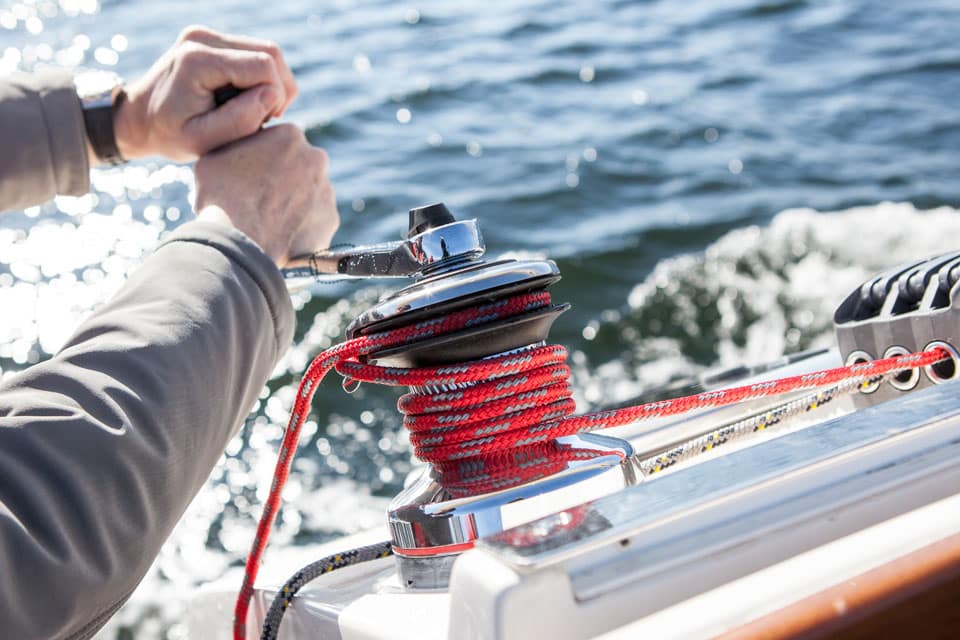
Sailing winches are almost always taken for granted, yet these compact pieces of mechanical machinery are incredibly powerful. Even the winches on a 30- or 40-foot sailboat are capable of pulling 2 tons or more. The thing about winches is that they’re so reliable that most sailors rarely pay much attention to them—until something goes wrong. Using sailing winches correctly should always be a priority.
To understand the capability of winches, let’s crunch some numbers. Say your boat has a “number 42” primary winch, which is an industry standard. The “42” represents a 42:1 power ratio. If an average person applies 50 pounds of load using a 10-inch winch handle, the result will be 2,100 pounds of pull (42 x 50 = 2,100). That figure puts the power potential into suitable perspective. With this much power in play, you must consider whether you’re operating your winch safely. When it comes to sailing winches, the most common mistake is not having enough wraps around the drum to hold the line load safely. In most cases, three wraps just aren’t enough. With too few wraps, several issues can arise.
For example, say that you’re coming out of a tack with a little load on the new sheet. It’s still easy to grasp, so you lock it into the self-tailer. But as the wind freshens and the jib fills, the sheet load greatly exceeds what it was coming out of the tack. Now you want to bear away and ease the sheet. But with only three wraps on the drum, just releasing it from the self-tailer may suck your fingers into the winch. This is a very painful way to learn about winch loads.
Furthermore, beyond the personal hazard, higher loads and few wraps can also equal a damaged winch, as those greater sheet loads will be transferred to the self-tailing arm rather than to the drum. Replacing a bent or broken self-tailing arm is not an inexpensive proposition.
On the flip side, to err on the side of caution can also present problems. For instance, easing a sheet with too many wraps might result in an override that takes some time to unjam. The takeaway message here? There’s a fine line between too many and too few wraps. As is often the case in sailing, you can “feel” when it’s right. So pay attention to the loads on the winch, respect the powerful consequences, and wrap accordingly.
Sending someone up the mast? This requires even greater winch safety, as a life is literally in your hands. It’s a good idea to have an experienced sailor demonstrate for new crewmembers how to send someone aloft properly. Once again, it’s important to have a sufficient number of wraps to hold the person, yet not so many that the halyard overrides. Whenever possible, instead of trusting the self-tailer, always have a second person tailing the halyard. When lowering the mast climber back to the deck, ensure a smooth ride down by taking one or two wraps off the drum. You want to avoid bouncing and jerking the person the length of the spar.
Whenever you’re grinding a winch, if the load becomes excessive or extreme, simply stop cranking. This is especially important with winches powered electrically or hydraulically; with such winches, the operator can’t actually feel the increased tension. Take the time to observe the line. If it stops moving, this almost always means that something is jammed somewhere. A 2,100-pound load on a sheet that’s tangled around a deck hatch can quickly become a major problem if it isn’t immediately addressed.
With power winches, the loads are even greater. A small, electric winch motor can produce about 9 pounds of load, but because such engines spin so fast, the speed needs to be reduced. Enter a 24:1 reduction gear. However, the gear not only reduces the speed of the motor but also increases the torque—in this instance, to 216 pounds. Now multiply that by our previous 42:1 power ratio; suddenly, in theory, that little powered winch should be able to pull 9,072 pounds. (We say “in theory” because with a proper circuit breaker, the amperage draw should trip well before that load is reached. Also, the parts in a 42 winch are really designed to handle loads only produced by a sailor working a winch handle. If something does fail, it’s better if it’s a winch part and not anything more critical—like the mast.)
Of course, proper technique is only one part of winch safety. The other is making sure that they’re properly maintained. The little clicking noise you hear deep inside a working winch comes from the ratchet pawls. The pawls lock the drum in place to keep it from moving backward, and they essentially bear the entire load placed on a winch. When servicing a winch, it’s important to inspect the pawls to make sure they aren’t packed with gunk or cracked, which will cause them to stick in the socket. When that happens, there’s nothing to bear the load; essentially, it’s the same as trying to hold the jib sheet with a bare hand. At least once a season, check the pawls.
The winch’s mounting bolts also require periodic inspection. Over time, a surprising number of such bolts do loosen up, some to the point that they can be retightened by hand. Get in the habit of inspecting those bolts each spring, and while you’re at it, also test the deck section on which the winch is mounted. On older boats with cored decks, water may seep through the fastening holes and cause rot. In most cases, simply tapping the deck with a screwdriver tells the tale. A soft deck will make a different, easily distinguished sound from that made by a solid one. A rotten deck core won’t hold winch loads very long. Deck surgery is then required.
Remember: A single winch can generate huge loads, and these are often larger than most sailors realize. So always apply the correct number of wraps, avoid or correct jams, and keep up with basic maintenance. Treat your sailing winch with respect, and you’ll get plenty of trouble-free service from it.
Mike Lee is a marine-industry pro with over 25 years of technical and sailing experience.
- More: deck hardware , How To , seamanship
- More How To

When the Wind Goes Light

How We Built Our Own Bulwarks
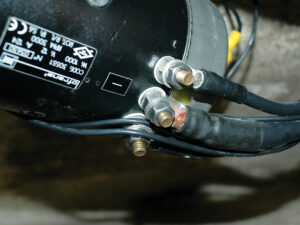
How to Keep Your Windlass Working For You

Southern Comfort: Tactical Tips for Sailing South

ACY Yachts Expands to the West Coast

Requiem for a Mate

Sailboat Preview: Neel 52
- Digital Edition
- Customer Service
- Privacy Policy
- Email Newsletters
- Cruising World
- Sailing World
- Salt Water Sportsman
- Sport Fishing
- Wakeboarding

- Sailing Supplies
Sailboat Winches
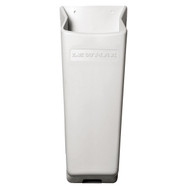
Lewmar Winch Handle Pocket
Lewmar Winch Handle Pocket This Lewmar Winch Handle Pocket will mount anywhere in a vertical position and fits 10" standard winch handles. With 4 mounting holes, 3 at the top and one at the base, this winch handle pocket is easy to install. Made of soft...
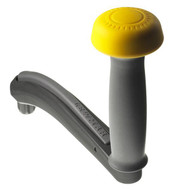
Lewmar One Touch Power Grip Winch Handle 8"
Lewmar One Touch Power Grip Winch Handle 8" This Lewmar Power Grip Winch Handle features Lewmar's One Touch technology. Lewmar's award-winning One Touch allows you to lock in and remove the winch handle with one hand. Simply squeeze the release lever,...

Rod Saver Winch Strap Replacement - 20
Winch Strap Replacement - 20'Replacement strap made of a 7,000 lb. polyester belt and 6,600 lb. drop forged snap hook. Includes a bolt and nylon lock nut for drum installation.Technical Specifications:Rated Capacity - 5,000 lbWorking Load - 1,665...
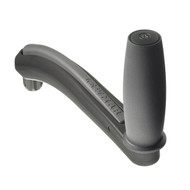
Lewmar One Touch Standard Grip Winch Handle 8"
Lewmar One Touch Standard Grip Winch Handle 8" This Lewmar Standard Grip Winch Handle features Lewmar's One Touch technology. Lewmar's award-winning One Touch allows you to lock in and remove the winch handle with one hand. Simply squeeze the release...
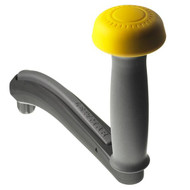
Lewmar One Touch Power Grip Winch Handle 10"
Lewmar One Touch Power Grip Winch Handle 10" This Lewmar Power Grip Winch Handle features Lewmar's One Touch technology. Lewmar's award-winning One Touch allows you to lock in and remove the winch handle with one hand. Simply squeeze the release lever,...
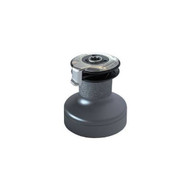
Lewmar 30ST EVO Two-Speed Self-Tailing Winch-Grey
Lewmar 30ST EVO Two-Speed Self-Tailing Winch-Grey Alloy The Lewmar EVO Self-Tailing Winch is a state-of-the-art winch. This self-tailing winch is easy to service, and has user friendly direction arrows. Features: Easy servicing - no tools...

Lewmar 16CST One Speed Self-Tailing Winch
Lewmar 16CST Chrome Self-Tailing Ocean Winch - One-Speed Lewmar winches are designed with both cruising sailors and racing crews in mind. Lewmar's Ocean winch is their most popular winch. Its styling attracts boat builders looking for a more classic...

Lewmar 30CST EVO Two-Speed Self-Tailing Winch
Lewmar 30CST EVO Two-Speed Self-Tailing Winch - Chrome The Lewmar EVO Self-Tailing Winch is a state-of-the-art winch. This self-tailing winch is easy to service, and has user friendly direction arrows. Features: Easy servicing - no tools...

Lewmar 30ST EVO Two-Speed Self-Tailing Winch
Lewmar 30ST EVO Two-Speed Self-Tailing Winch - Black Alloy The Lewmar EVO Self-Tailing Winch is a state-of-the-art winch. This self-tailing winch is easy to service, and has user friendly direction arrows. Features: Easy servicing - no tools...

Lewmar 16AST One-Speed Self-Tailing Winch
Lewmar 16AST One-Speed Aluminum Ocean Winch - Self-Tailing Lewmar winches are designed with both cruising sailors and racing crews in mind. Lewmar's Ocean winch is their most popular winch. Its styling attracts boat builders looking for a more classic...

Lewmar One Touch Standard Grip Winch Handle 10"
Lewmar One Touch Standard Grip Winch Handle 10" This Lewmar Standard Grip Winch Handle features Lewmar's One Touch technology. Lewmar's award-winning One Touch allows you to lock in and remove the winch handle with one hand. Simply squeeze the release...

Rod Saver Winch Strap Replacement w/Safety Strap - 16
Winch Strap Replacement with Safety Strap - 2" x 16'2" x 16' Replacement winch strap with 30" safety strap and 3,970 lb. drop forged snap hook. The winch strap is constructed of 7,000 lb. polyester belt and 6,600 lb. drop forged snap hook. Includes a...
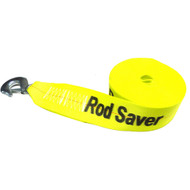
Rod Saver Heavy-Duty Winch Strap Replacement - Yellow - 3" x 20
Heavy-Duty Winch Strap Replacement - Yellow - 3" x 20'A 3" x 20' wide Yellow Heavy Duty Replacement Winch Strap constructed with 10,000 lb. webbing and a 10,000 lb. drop forged snap hook. For use on 3" wide winch strap drums. Specifications:Length...

Lewmar 30CST Two-Speed Self-Tailing Winch
Lewmar 30CST Chrome Two-Speed Self-Tailing Winch Lewmar winches are designed with both cruising sailors and racing crews in mind. Lewmar's Ocean winch is their most popular winch. Its styling attracts boat builders looking for a more classic look, or...
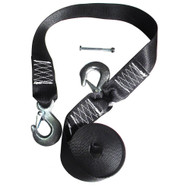
Rod Saver Winch Strap Replacement w/Safety Strap - 20
Winch Strap Replacement with Safety Strap - 20'20' Replacement winch strap with 30" safety strap and 3,970 lb. drop forged snap hook. The winch strap is constructed of 7,000 lb. polyester belt and 6,600 lb. drop forged snap hook. Includes a bolt...

Rod Saver Winch Strap Replacement w/Tail - 16
Winch Strap Replacement with Tail - 16'16' Replacement winch strap constructed of 7,000 lb. polyester belt and 6,600 lb. drop forged snap hook. These models have a sewn tail for drum installation. Specifications:Length (Feet): 16'Box Dimensions:...

Lewmar 15CST EVO One-Speed Self-Tailing Winch
Lewmar 15CST EVO One-Speed Self-Tailing Winch - Chrome The Lewmar EVO Self-Tailing Winch is a state-of-the-art winch. This self-tailing winch is easy to service, and has user friendly direction arrows. Features: Easy servicing - no tools...
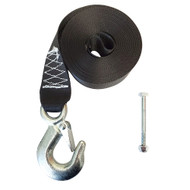
Rod Saver Winch Strap Replacement - 25
Winch Strap Replacement - 25'25' Replacement winch strap constructed of 7,000 lb. polyester belt and 6,600 lb. drop forged snap hook. Includes a bolt and nylon lock nut for drum installation. Specifications:Length (Feet): 25'Box Dimensions:...

Harken 40 Self-Tailing Radial Aluminum Winch - 2 Speed
40 Self-Tailing Radial Aluminum Winch - 2 SpeedThe Radial winch drum’s gripping surface is shaped for each winch size and drum material and features diagonal ribs (rather than textured abrasive materials) to maximize gripping power and greatly...

Andersen 28 ST FS - 2-Speed Self-Tailing Manual Winch - Full Stainless Steel
28 ST FS - 2-Speed Self-Tailing Manual Winch - Full Stainless SteelPower Rib™ANDERSEN Winches© feature the Power Rib™. Unlike other winches with abrasive drum surfaces, ANDERSEN winch drums have vertical ribs running up the surface. This...
These compact boat parts are one of the most powerful and utilized pieces of equipment on a sailboat. Sailboat winches are capable of pulling several tons of weight; however, they take up very little deck or railing space. Sailboat winches take on a lot of wear and tear and are easily damaged with their constant use. Even the most experienced sailors will have to replace damaged winches from time to time.
When it is time to replace or repair your sailboat winches, Wholesale Marine carries a large selection from the leading marine brands like Ronstan , Lewmar , Barton Marine , and Andersen . Each manufacturer provides quality winches and parts that are a great choice for most sailboats.
We Offer Great Sailing Products at Great Prices
Sailboat winches come in a variety of different styles, but the most common are snubber, plain top, self-tailing, or electric. A common winch for smaller dayboats or dinghies is the snubber winch. We carry the Barton Marine 21101 that is a great economical lightweight option. For a single-speed winch, we also offer a selection of Barton Single Speed winches.
A popular winch-type are the self-tailing winches that free up a hand and hold the line in place while you’re turning the winch. They are a great option for solo sailors. Wholesale Marine carries both single and double-speed options. The Lewmar 30CST EVO Two-Speed Self Tailing Winch is easy to install, and its user-friendly design makes it a great two-speed option. The Lewmar 15CST EVO One-Speed Self-tailing Winch is a durable option that will provide years of reliable use.
No matter what type of boat parts and accessories you need, including parts for your sailboats, Wholesale Marine has you covered. We offer a full line of sailboat winches and winch parts, including handles and winches. Our experienced customer service team is here to help answer any questions you may have regarding parts that are right for your sailing needs. Contact us Monday through Friday From 9:00 AM until 6:00 PE EST at 877-388-2628. Make sure to ask about our Captain’s Club Rewards Program for additional savings on all your future purchases at Wholesale Marine.
Subscribe to our Newsletter
Get the latest updates on new products and upcoming sales
Oops, something went wrong. Please try again.
You are now logged in!
Yachting World
- Digital Edition
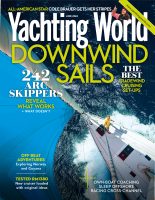
iWinch test: new electric winch handle option
- Bruce Jacobs
- February 11, 2022
The iWinch is a borderline-genuis idea, which allows anyone with a drill to have an electric winch handle on their boat. Bruce Jacobs, tests it out

Sometimes, a solution to a problem comes along that is so obvious, you wonder why it hasn’t been there for years. In my opinion the iWinch, an electric winch handle fitting for a drill, is a case in point.
Some tasks on a yacht are just hard work: getting that halyard up, sheeting in a headsail, tightening the reefing pennant – all big, heavy jobs and none of us are getting younger.
You’ll always get the traditionalists who say electric winches are unnecessary or dangerous as you can’t feel any blockage or snagging. The truth is though, that sometimes having some powered assistance is very useful, especially when you’re sailing short-handed .
If you’ve ever thought about getting electric winches as a solution, you may well have stopped short when you’ve seen the £3,000 price tag (for a common 44 size) – and then there’s the space they need under the deck and the power drain on the batteries. Space and cost are show stoppers for many.
Previously, we’ve looked at the so-called powered winch handles. The WinchRite is probably the most well known, and it is definitely an effective tool; likewise for the Ewincher .
What stopped us using either on an ongoing basis was firstly their size (where do you store them?) and secondly their cost. The WinchRite costs over £600 and the Ewincher close to an eye watering £2,000. Great ideas both of them, but ultimately not something we could justify.
Which brings us to this neat idea. We’re a bit late to the party on the iWinch, but we love it. It’s basically just a winch socket and drill bit combined. It fits into a standard drill, though you do want one with around 90-100Nm of torque, and it will need a 13mm chuck, so do check this. Otherwise that’s it. You have a powered winch handle that’s highly effective, but only costs £55.
We have given the iWinch quite a beasting over the summer, using it on our heavy 60ft expedition yachts where the loads are much greater than you’d expect on a standard 40ft cruising yacht. Every skipper, without exception, loved the iWinch for its utility and practicality, even if it wasn’t seen necessarily as being an everyday piece of kit.
Your drill may not have the full 110Nm torque of the WinchRite or Ewincher, but so long as it has around 100Nm this is such a useful, cheap solution to a problem that you really can’t go wrong with it (other than dropping your drill overboard or risk it getting salted up!).
Highly recommended.
Buy the iWinch now from Force 4
Note: We may earn a commission when you buy through links on our site, at no extra cost to you. This doesn’t affect our editorial independence.
Other electric winch handles.
The Ewincher is a sophisticated product that can actually be used as a manual winch handle as well as an electric motor. It has a variable speed reversible motor and generates a useful 80Nm of torque.
We tested it in the Norwegian Sea, en route from the Faroes to Arctic Norway, just as the winds hit gale force. The crew were feeling a bit breathless after swapping out our yankee 2 for the yankee 3, the yacht was screaming along and I was feeling guilty about asking them to trim the sails yet again.
I brought out the big yellow handle to general looks of astonishment and amusement, but this died down as I effortlessly trimmed in our headsail and the double-reefed main while drinking my tea. Suddenly there was a host of crew trying to grab the handle for their go and I had my first inkling that this could be a big success.
I did worry we might drop it overboard or that it would run out of battery now my crew had become lazy, but neither happened.
After two hours of hard sailing and trimming, it still had plenty of power, and these were big sails in strong winds. When the warning light did finally come on it took only seconds to swap batteries and we were off and running again.
Price £1,900
Buy the Ewincher from Marine Chandlery
Rachael agreed to try out the WinchRite on the Ocean Crossing Masterclass she was running from Spain to Madeira. This was a crew full of aspiring Yachtmaster Oceans and a serious test for any piece of kit.
Again, it was tactically deployed as the winds reached Force 6 and the loads all became that much heavier.
As a reef was called (a skipper’s perk and what skipper in their right mind would go forward where the hard work happens and it’s bouncy and wet) one of the crewmembers commented that he’d been to the mast so often he was now on first name terms with the deck fittings up there.
He was given the WinchRite and the change in mood was conspicuous. He came back beaming and there was no going back thereafter.
The powerful motor made short work of the next reef and the genoa too. Bearing in mind we are sailing 60ft expedition yachts and the genoa sheet is on a 66:1 ratio winch, this was pretty impressive. The WinchRite doesn’t have the capacity to be used as a normal winch handle, and the battery is built in so when it runs out the unit is unavailable until recharged.
Buy WinchRite from Foxs Chandlery
If you enjoyed this….
Yachting World is the world’s leading magazine for bluewater cruisers and offshore sailors. Every month we have inspirational adventures and practical features to help you realise your sailing dreams. Build your knowledge with a subscription delivered to your door. See our latest offers and save at least 30% off the cover price.
SailForce :

Electric winch handle

Manual Winches HUTTON

For sailors
Designed and produced on the Côte d'Azur (France).
TECHNICAL ASSISTANCE
+ more than 250 partners worldwide
Express delivery
Delivery in 3 to 5 working days
ELECTRIC WINCH SailForce
- 2 Variable speeds
- 50% energy savings
- Ultra-sensitive tesion limiter
Discover the future of electric winches
ELECTRIC WINCH HANDLE
Light, fast, powerful. Motorize all your winches without installation.
Manual Winches by HUTTON
Reliability, resistance and ease of maintenance. Chrome finish.

New dealers Moory Nautics : what do they think of Ewincher?

Sailing short-handed: Adventure(s) straight ahead!

Ewincher cited in an article on winches published in Figaro Magazine

The floor is given to Ewincher resellers : Hi Nelson

Yacht, the German magazine, awards 5 stars to Ewincher
All our news and tips
19' O-Day Sailboat - $2,500 (Kellogg)

QR Code Link to This Post
post id: 7754579880
posted: 2024-06-06 19:44
♥ best of [ ? ]
refresh the page.
19' O-Day Sailboat - boats - by owner - marine sale - craigslist
Good Condition, fun to sail! Trailer included. Also 55 lb minn kota trolling motor. Sails and rigging good and electrical. Electrical winch on trailer for raising mast. Last used in Bayview Idaho....
The Unique Burial of a Child of Early Scythian Time at the Cemetery of Saryg-Bulun (Tuva)
<< Previous page
Pages: 379-406
In 1988, the Tuvan Archaeological Expedition (led by M. E. Kilunovskaya and V. A. Semenov) discovered a unique burial of the early Iron Age at Saryg-Bulun in Central Tuva. There are two burial mounds of the Aldy-Bel culture dated by 7th century BC. Within the barrows, which adjoined one another, forming a figure-of-eight, there were discovered 7 burials, from which a representative collection of artifacts was recovered. Burial 5 was the most unique, it was found in a coffin made of a larch trunk, with a tightly closed lid. Due to the preservative properties of larch and lack of air access, the coffin contained a well-preserved mummy of a child with an accompanying set of grave goods. The interred individual retained the skin on his face and had a leather headdress painted with red pigment and a coat, sewn from jerboa fur. The coat was belted with a leather belt with bronze ornaments and buckles. Besides that, a leather quiver with arrows with the shafts decorated with painted ornaments, fully preserved battle pick and a bow were buried in the coffin. Unexpectedly, the full-genomic analysis, showed that the individual was female. This fact opens a new aspect in the study of the social history of the Scythian society and perhaps brings us back to the myth of the Amazons, discussed by Herodotus. Of course, this discovery is unique in its preservation for the Scythian culture of Tuva and requires careful study and conservation.
Keywords: Tuva, Early Iron Age, early Scythian period, Aldy-Bel culture, barrow, burial in the coffin, mummy, full genome sequencing, aDNA
Information about authors: Marina Kilunovskaya (Saint Petersburg, Russian Federation). Candidate of Historical Sciences. Institute for the History of Material Culture of the Russian Academy of Sciences. Dvortsovaya Emb., 18, Saint Petersburg, 191186, Russian Federation E-mail: [email protected] Vladimir Semenov (Saint Petersburg, Russian Federation). Candidate of Historical Sciences. Institute for the History of Material Culture of the Russian Academy of Sciences. Dvortsovaya Emb., 18, Saint Petersburg, 191186, Russian Federation E-mail: [email protected] Varvara Busova (Moscow, Russian Federation). (Saint Petersburg, Russian Federation). Institute for the History of Material Culture of the Russian Academy of Sciences. Dvortsovaya Emb., 18, Saint Petersburg, 191186, Russian Federation E-mail: [email protected] Kharis Mustafin (Moscow, Russian Federation). Candidate of Technical Sciences. Moscow Institute of Physics and Technology. Institutsky Lane, 9, Dolgoprudny, 141701, Moscow Oblast, Russian Federation E-mail: [email protected] Irina Alborova (Moscow, Russian Federation). Candidate of Biological Sciences. Moscow Institute of Physics and Technology. Institutsky Lane, 9, Dolgoprudny, 141701, Moscow Oblast, Russian Federation E-mail: [email protected] Alina Matzvai (Moscow, Russian Federation). Moscow Institute of Physics and Technology. Institutsky Lane, 9, Dolgoprudny, 141701, Moscow Oblast, Russian Federation E-mail: [email protected]
Shopping Cart Items: 0 Cart Total: 0,00 € place your order
Price pdf version
student - 2,75 € individual - 3,00 € institutional - 7,00 €

Copyright В© 1999-2022. Stratum Publishing House
Follow Puck Worlds online:
- Follow Puck Worlds on Twitter
Site search
Filed under:
- Kontinental Hockey League
Gagarin Cup Preview: Atlant vs. Salavat Yulaev
Share this story.
- Share this on Facebook
- Share this on Twitter
- Share this on Reddit
- Share All sharing options
Share All sharing options for: Gagarin Cup Preview: Atlant vs. Salavat Yulaev
Gagarin cup (khl) finals: atlant moscow oblast vs. salavat yulaev ufa.
Much like the Elitserien Finals, we have a bit of an offense vs. defense match-up in this league Final. While Ufa let their star top line of Alexander Radulov, Patrick Thoresen and Igor Grigorenko loose on the KHL's Western Conference, Mytischi played a more conservative style, relying on veterans such as former NHLers Jan Bulis, Oleg Petrov, and Jaroslav Obsut. Just reaching the Finals is a testament to Atlant's disciplined style of play, as they had to knock off much more high profile teams from Yaroslavl and St. Petersburg to do so. But while they did finish 8th in the league in points, they haven't seen the likes of Ufa, who finished 2nd.
This series will be a challenge for the underdog, because unlike some of the other KHL teams, Ufa's top players are generally younger and in their prime. Only Proshkin amongst regular blueliners is over 30, with the work being shared by Kirill Koltsov (28), Andrei Kuteikin (26), Miroslav Blatak (28), Maxim Kondratiev (28) and Dmitri Kalinin (30). Oleg Tverdovsky hasn't played a lot in the playoffs to date. Up front, while led by a fairly young top line (24-27), Ufa does have a lot of veterans in support roles: Vyacheslav Kozlov , Viktor Kozlov , Vladimir Antipov, Sergei Zinovyev and Petr Schastlivy are all over 30. In fact, the names of all their forwards are familiar to international and NHL fans: Robert Nilsson , Alexander Svitov, Oleg Saprykin and Jakub Klepis round out the group, all former NHL players.
For Atlant, their veteran roster, with only one of their top six D under the age of 30 (and no top forwards under 30, either), this might be their one shot at a championship. The team has never won either a Russian Superleague title or the Gagarin Cup, and for players like former NHLer Oleg Petrov, this is probably the last shot at the KHL's top prize. The team got three extra days rest by winning their Conference Final in six games, and they probably needed to use it. Atlant does have younger regulars on their roster, but they generally only play a few shifts per game, if that.
The low event style of game for Atlant probably suits them well, but I don't know how they can manage to keep up against Ufa's speed, skill, and depth. There is no advantage to be seen in goal, with Erik Ersberg and Konstantin Barulin posting almost identical numbers, and even in terms of recent playoff experience Ufa has them beat. Luckily for Atlant, Ufa isn't that far away from the Moscow region, so travel shouldn't play a major role.
I'm predicting that Ufa, winners of the last Superleague title back in 2008, will become the second team to win the Gagarin Cup, and will prevail in five games. They have a seriously well built team that would honestly compete in the NHL. They represent the potential of the league, while Atlant represents closer to the reality, as a team full of players who played themselves out of the NHL.
- Atlant @ Ufa, Friday Apr 8 (3:00 PM CET/10:00 PM EST)
- Atlant @ Ufa, Sunday Apr 10 (1:00 PM CET/8:00 AM EST)
- Ufa @ Atlant, Tuesday Apr 12 (5:30 PM CET/12:30 PM EST)
- Ufa @ Atlant, Thursday Apr 14 (5:30 PM CET/12:30 PM EST)
Games 5-7 are as yet unscheduled, but every second day is the KHL standard, so expect Game 5 to be on Saturday, like an early start.
Loading comments...
- Yekaterinburg
- Novosibirsk
- Vladivostok

- Tours to Russia
- Practicalities
- Russia in Lists
Rusmania • Deep into Russia
Out of the Centre
Savvino-storozhevsky monastery and museum.

Zvenigorod's most famous sight is the Savvino-Storozhevsky Monastery, which was founded in 1398 by the monk Savva from the Troitse-Sergieva Lavra, at the invitation and with the support of Prince Yury Dmitrievich of Zvenigorod. Savva was later canonised as St Sabbas (Savva) of Storozhev. The monastery late flourished under the reign of Tsar Alexis, who chose the monastery as his family church and often went on pilgrimage there and made lots of donations to it. Most of the monastery’s buildings date from this time. The monastery is heavily fortified with thick walls and six towers, the most impressive of which is the Krasny Tower which also serves as the eastern entrance. The monastery was closed in 1918 and only reopened in 1995. In 1998 Patriarch Alexius II took part in a service to return the relics of St Sabbas to the monastery. Today the monastery has the status of a stauropegic monastery, which is second in status to a lavra. In addition to being a working monastery, it also holds the Zvenigorod Historical, Architectural and Art Museum.
Belfry and Neighbouring Churches

Located near the main entrance is the monastery's belfry which is perhaps the calling card of the monastery due to its uniqueness. It was built in the 1650s and the St Sergius of Radonezh’s Church was opened on the middle tier in the mid-17th century, although it was originally dedicated to the Trinity. The belfry's 35-tonne Great Bladgovestny Bell fell in 1941 and was only restored and returned in 2003. Attached to the belfry is a large refectory and the Transfiguration Church, both of which were built on the orders of Tsar Alexis in the 1650s.

To the left of the belfry is another, smaller, refectory which is attached to the Trinity Gate-Church, which was also constructed in the 1650s on the orders of Tsar Alexis who made it his own family church. The church is elaborately decorated with colourful trims and underneath the archway is a beautiful 19th century fresco.
Nativity of Virgin Mary Cathedral

The Nativity of Virgin Mary Cathedral is the oldest building in the monastery and among the oldest buildings in the Moscow Region. It was built between 1404 and 1405 during the lifetime of St Sabbas and using the funds of Prince Yury of Zvenigorod. The white-stone cathedral is a standard four-pillar design with a single golden dome. After the death of St Sabbas he was interred in the cathedral and a new altar dedicated to him was added.

Under the reign of Tsar Alexis the cathedral was decorated with frescoes by Stepan Ryazanets, some of which remain today. Tsar Alexis also presented the cathedral with a five-tier iconostasis, the top row of icons have been preserved.
Tsaritsa's Chambers

The Nativity of Virgin Mary Cathedral is located between the Tsaritsa's Chambers of the left and the Palace of Tsar Alexis on the right. The Tsaritsa's Chambers were built in the mid-17th century for the wife of Tsar Alexey - Tsaritsa Maria Ilinichna Miloskavskaya. The design of the building is influenced by the ancient Russian architectural style. Is prettier than the Tsar's chambers opposite, being red in colour with elaborately decorated window frames and entrance.

At present the Tsaritsa's Chambers houses the Zvenigorod Historical, Architectural and Art Museum. Among its displays is an accurate recreation of the interior of a noble lady's chambers including furniture, decorations and a decorated tiled oven, and an exhibition on the history of Zvenigorod and the monastery.
Palace of Tsar Alexis

The Palace of Tsar Alexis was built in the 1650s and is now one of the best surviving examples of non-religious architecture of that era. It was built especially for Tsar Alexis who often visited the monastery on religious pilgrimages. Its most striking feature is its pretty row of nine chimney spouts which resemble towers.

Plan your next trip to Russia
Ready-to-book tours.
Your holiday in Russia starts here. Choose and book your tour to Russia.
REQUEST A CUSTOMISED TRIP
Looking for something unique? Create the trip of your dreams with the help of our experts.

IMAGES
VIDEO
COMMENTS
Sail Area. Efficient sail handling begins with the selection of the correct winch. To help you select from the winches described on this site the chart below is designed as a quick reference to match application, yacht size and winch. Cross reference your yacht size (for masthead rigs) or sail area (fractional rigs) with application, to ...
Used on sailboats, winches provide a mechanical advantage when controlling sheets, halyards and other lines. Sailboats have a mainsail, usually a headsail and frequently a spinnaker. Sheeting in or otherwise adjusting these sails frequently requires more than one size of winch. At West Marine, you'll find self-tailing winches and non-self ...
Harken #40 Radial self-tailing chrome two-speed winch. Harken Radial Winches have angled ribs that drive the line down on the drum when you ease it. Therefore, on a winch with a 10" handle length, 5" drum diameter, and a 6:1 gear ratio, the power ratio is (10/2.5) x 6=24:1. Higher numbers mean that your strength is multiplied more and that the ...
Electrical winches are available as a solution to short-handed or overpowered sailing. Winches are sold based on material as well, whether you want the lightweight of an aluminum winch, an appealing chrome sailboat winch or if you are looking for the visual aesthetic of a stainless steel yacht winch. Technical assistance is provided to help you ...
Introduction: Sailing is an exhilarating experience that combines the awe of nature with the technical skills required to navigate the open waters. One crucial component of any sailboat is the winch, a mechanical device that allows sailors to control and adjust the sails.In this beginner's guide, we will delve into the world of sail boat winches, unraveling their mechanisms, types, and ...
How To Use A Winch. Winch operation is pretty simple too - after all, it is a simple machine. You wrap the line around the winch three or four times from the bottom up, pulling the line in with one hand and while you crank the winch with the other. On big boats or heavy breeze days, you can team up on a winch with a crew mate, where one person ...
Winches are to sailboats what the inclined plane was to the Egyptians. They make the difficult easy, place the impossible within reach. The equivalent of a dozen or more men needed to heave on a square rigger's halyard or brace is represented on a modern sailboat by a small, precision-made, cylindrical machine packed with levers and gears.
1. Manual winches. Manual winches are operated by hand. They have a handle that sailors turn to wind in or release the line. They are commonly found on smaller sailboats and are cost-effective. 2. Electric winches. Electric winches are powered by an electric motor, making sail adjustments even more effortless.
A sailing winch is a mechanical device used in sailboats to control and trim the sails. It consists of a drum that rotates with the help of gears, enabling sailors to adjust the tension and position of the sail by winding or unwinding the line. These winches greatly enhance efficiency and ease of handling sails, especially in larger vessels.
Winch gearing is all based on required line speed, which means being in the right gear to trim the sail in smoothly at the same rate the apparent-wind angle changes. Driving a sail in and stalling ...
A sailboat winch is a mechanical winding device that allows you to tighten and loosen lines. Winches ratchet in either direction. Sailboat winches are present on nearly every sailing vessel above twenty feet in length. Winches allow you to wind your sheets and halyards using a crank instead of pulling them in by hand.
Denmark's Andersen is reputed for the quality of the build of its all-stainless steel winches, which run from size 12 up to 110. The E1 is its entry-level electric winch, which operates with just a single speed. Two- and even three-speed versions start from the 60ST size, which roughly equates to genoa sheeting on a 45ft-plus boat.
Let us help. 206-632-4462. Upgrade your sailboat's performance with top-rated winches from Lewmar & Harken. Find sailboat winches, winch parts, handles & more at Fisheries Supply.
Say your boat has a "number 42" primary winch, which is an industry standard. The "42" represents a 42:1 power ratio. If an average person applies 50 pounds of load using a 10-inch winch handle, the result will be 2,100 pounds of pull (42 x 50 = 2,100). That figure puts the power potential into suitable perspective.
We offer a full line of sailboat winches and winch parts, including handles and winches. Our experienced customer service team is here to help answer any questions you may have regarding parts that are right for your sailing needs. Contact us Monday through Friday From 9:00 AM until 6:00 PE EST at 877-388-2628.
Ewincher. The Ewincher is a sophisticated product that can actually be used as a manual winch handle as well as an electric motor. It has a variable speed reversible motor and generates a useful ...
ELECTRIC WINCHSailForce. ELECTRIC WINCH. SailForce. 2 Variable speeds. 50% energy savings. Ultra-sensitive tesion limiter. Discover the future of electric winches. Discover Order.
Winch Crank Winch Handle High Precision For Marine Trailer Winches For Car. Brand New. $19.94. Was: $20.99. or Best Offer. Free shipping. Vint. Matched Pair Brass/Bronze Sailboat Ratchet Winch Tensioner Pulleys Lot #3. Pre-Owned.
/r/Sailing is a place to ask about, share, show, and enjoy all about sailing, sail boat racing, and technical discussions. As long as it is about sailing and civil, it is welcome here. *Please note that if your Reddit account is new or you have low Karma then your post might be blocked as spam*
Good Condition, fun to sail! Trailer included. Also 55 lb minn kota trolling motor. Sails and rigging good and electrical. Electrical winch on trailer for raising mast. Last used in Bayview Idaho. $2,500.00 Or Best Offer Hull Type: Keel/Cbrd. Rigging Type: Fractional Sloop LOA: 19.00 ft / 5.79 m LWL: 16.67 ft / 5.08 m S.A. (reported): 179.00 ...
Sail Area Mainsail 732 sq ft (furling in-mast, std), 850 sq ft (traditional mast); genoa 807 sq ft; self-tacking jib (std) 581 sq ft; asymmetrical 2,690 sq ft. Engine 110hp diesel. Designer Philippe Briand Yacht Design/Winch Design. Builder Jeanneau, jeanneau.com
Luxury sailing catamaran LIR measures 20.44m (67ft) and can accommodate up to 8 charter guests, in 4 spacious, en-suite double cabins. ... Amidships on the forward edge of the flybridge is a bank of four Antal winches for handling main, traveler, reefing lines, and genoa and gennaker sheets (the latter sail is set on a flexible furler forward ...
Burial 5 was the most unique, it was found in a coffin made of a larch trunk, with a tightly closed lid. Due to the preservative properties of larch and lack of air access, the coffin contained a well-preserved mummy of a child with an accompanying set of grave goods. The interred individual retained the skin on his face and had a leather ...
Much like the Elitserien Finals, we have a bit of an offense vs. defense match-up in this league Final. While Ufa let their star top line of Alexander Radulov, Patrick Thoresen and Igor Grigorenko loose on the KHL's Western Conference, Mytischi played a more conservative style, relying on veterans such as former NHLers Jan Bulis, Oleg Petrov, and Jaroslav Obsut.
Zvenigorod's most famous sight is the Savvino-Storozhevsky Monastery, which was founded in 1398 by the monk Savva from the Troitse-Sergieva Lavra, at the invitation and with the support of Prince Yury Dmitrievich of Zvenigorod. Savva was later canonised as St Sabbas (Savva) of Storozhev. The monastery late flourished under the reign of Tsar ...